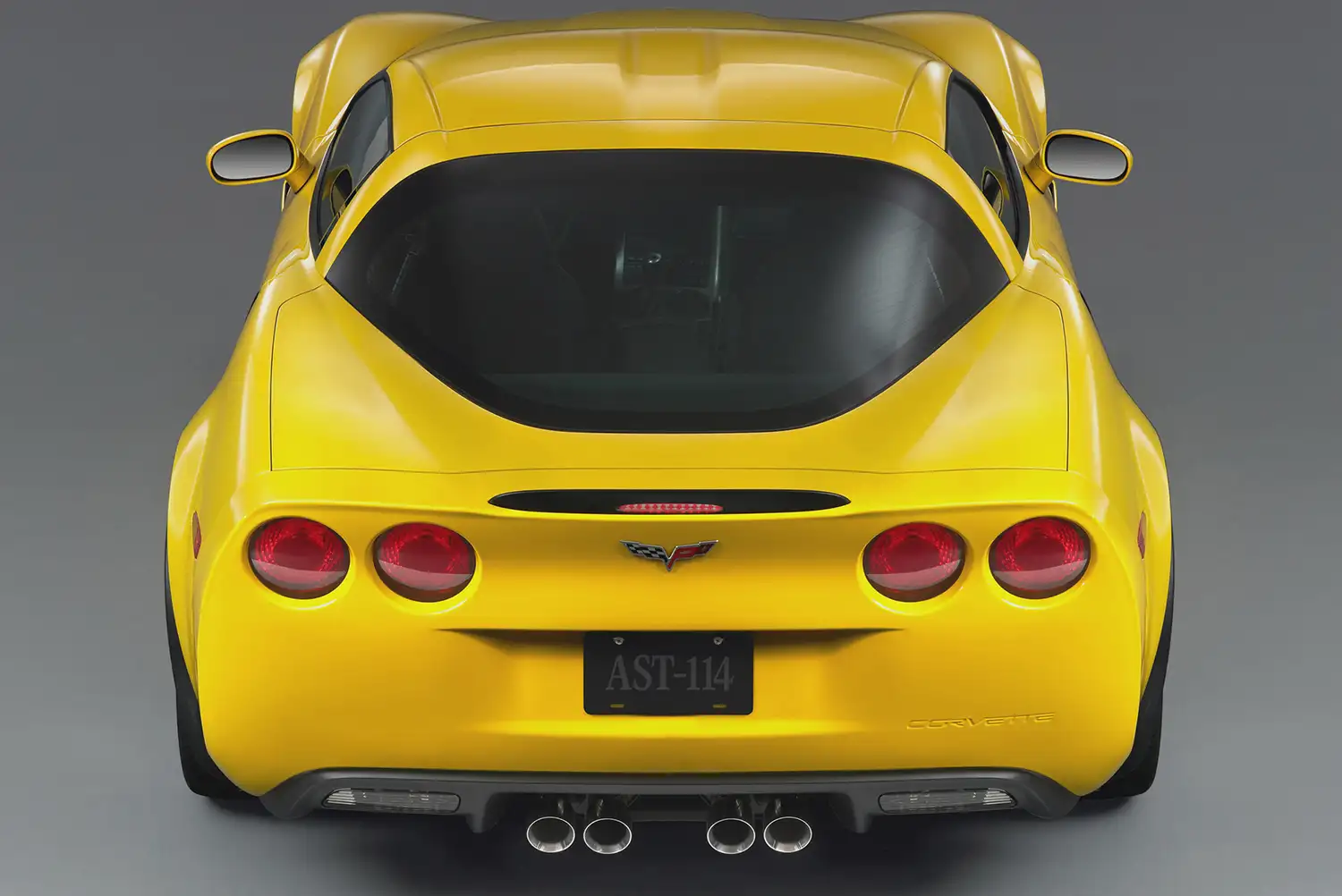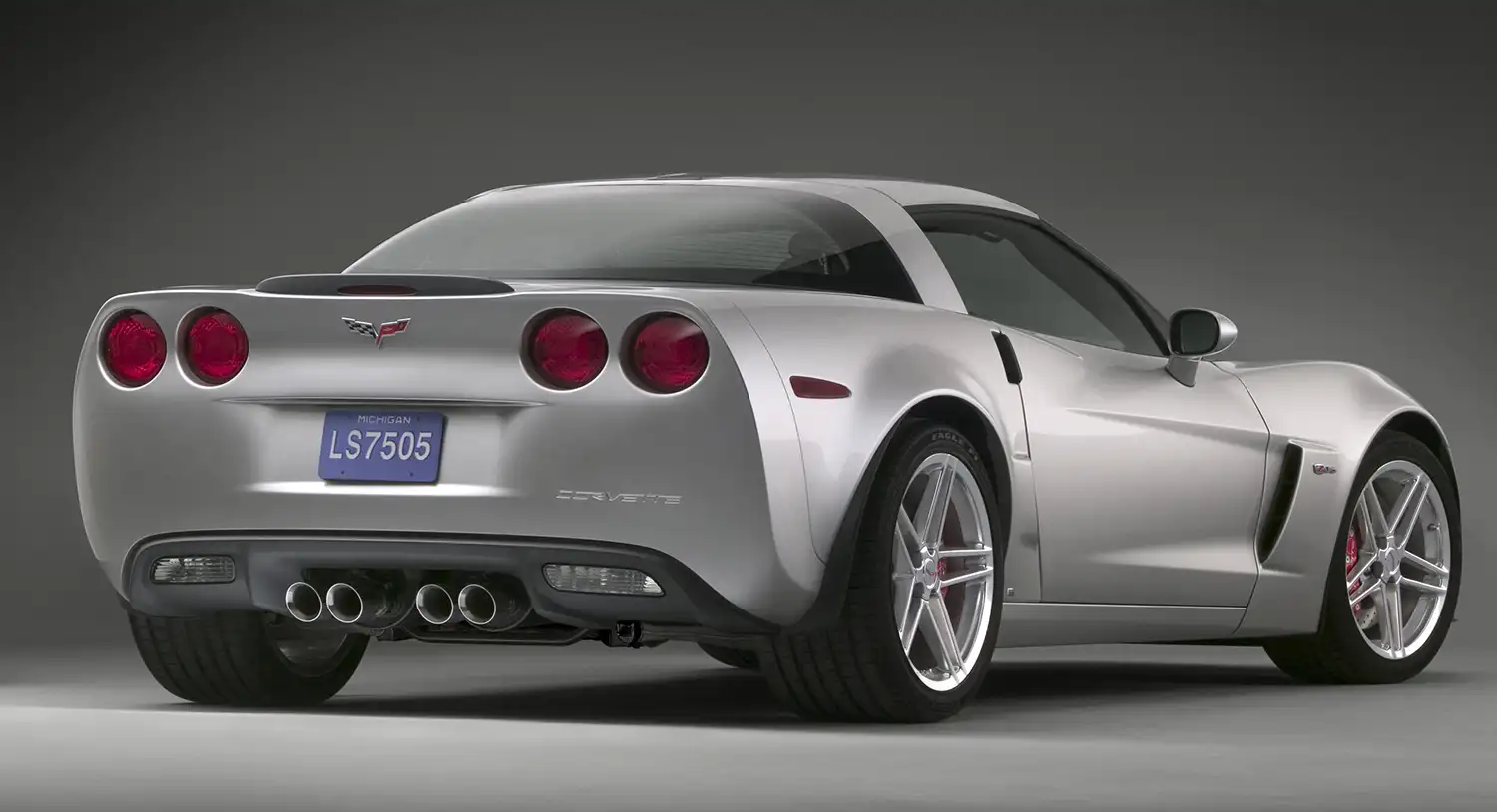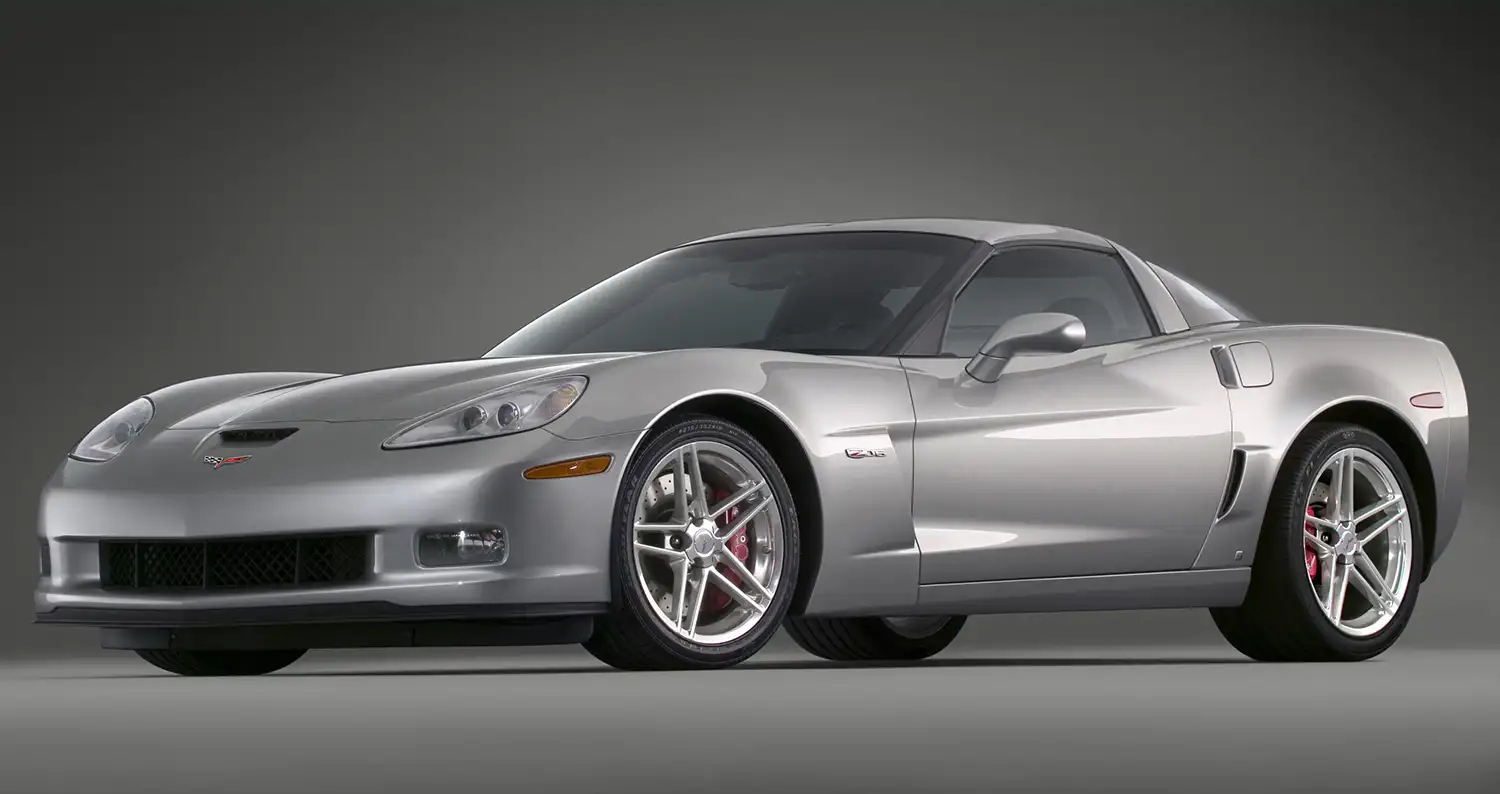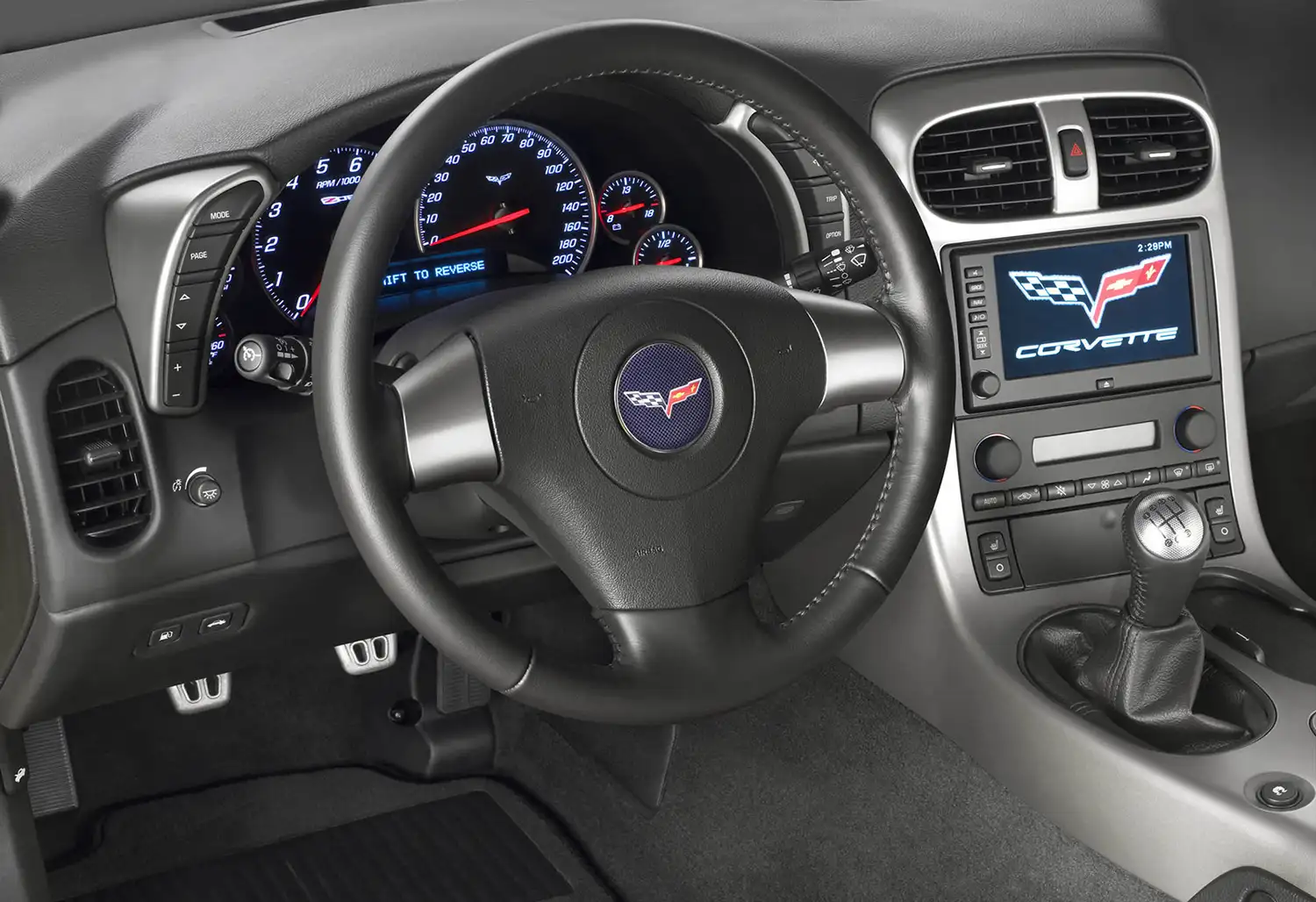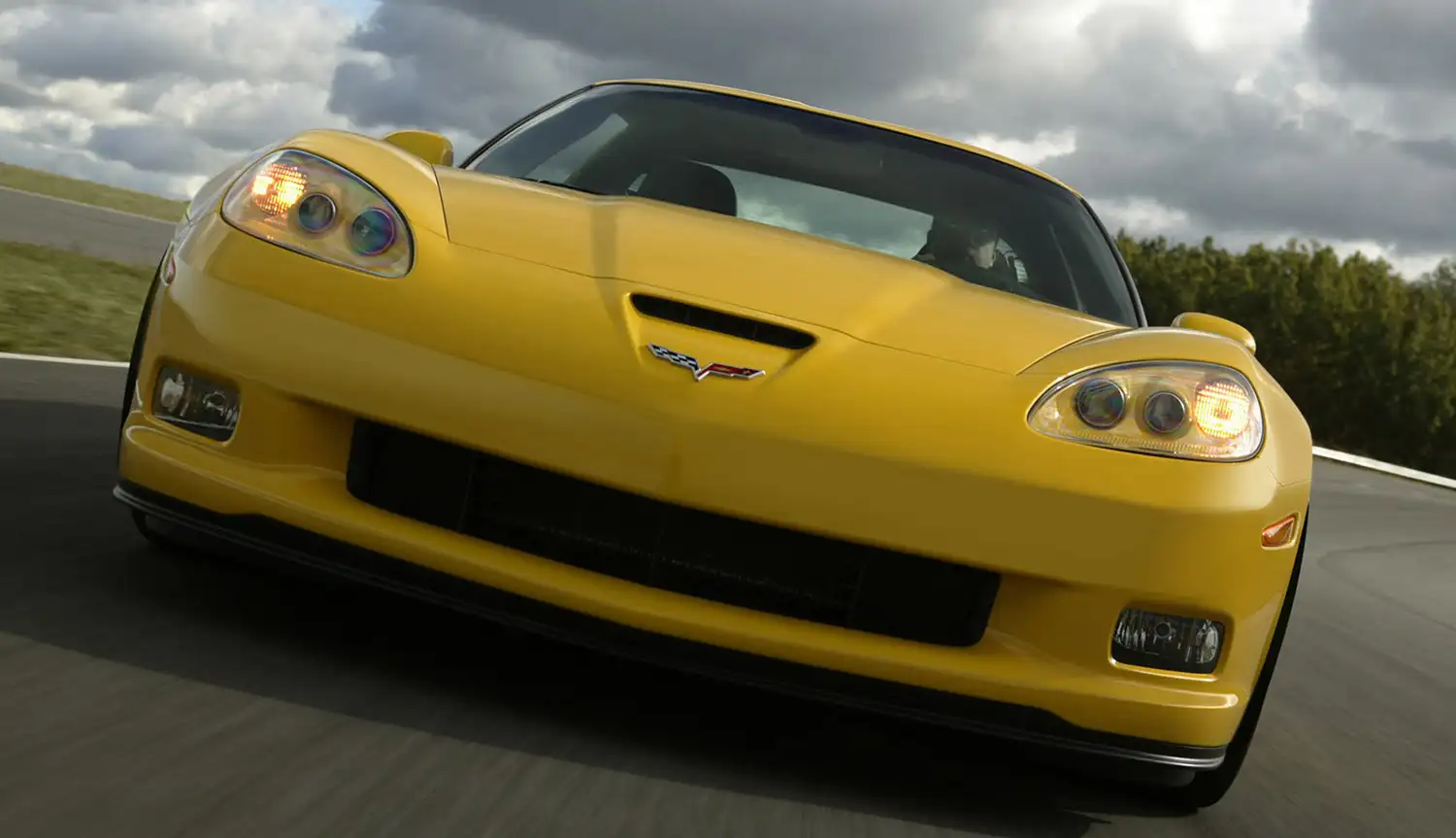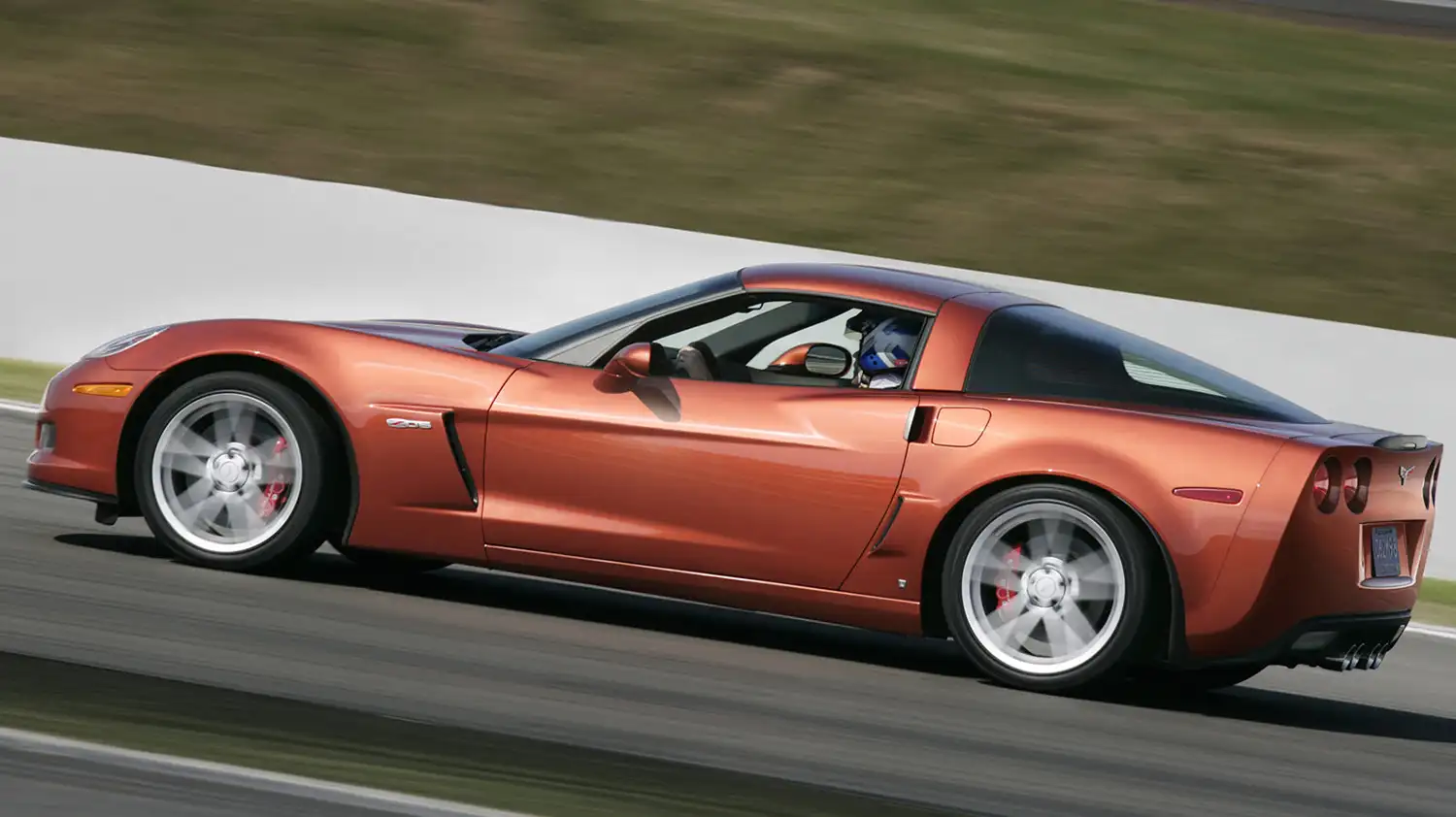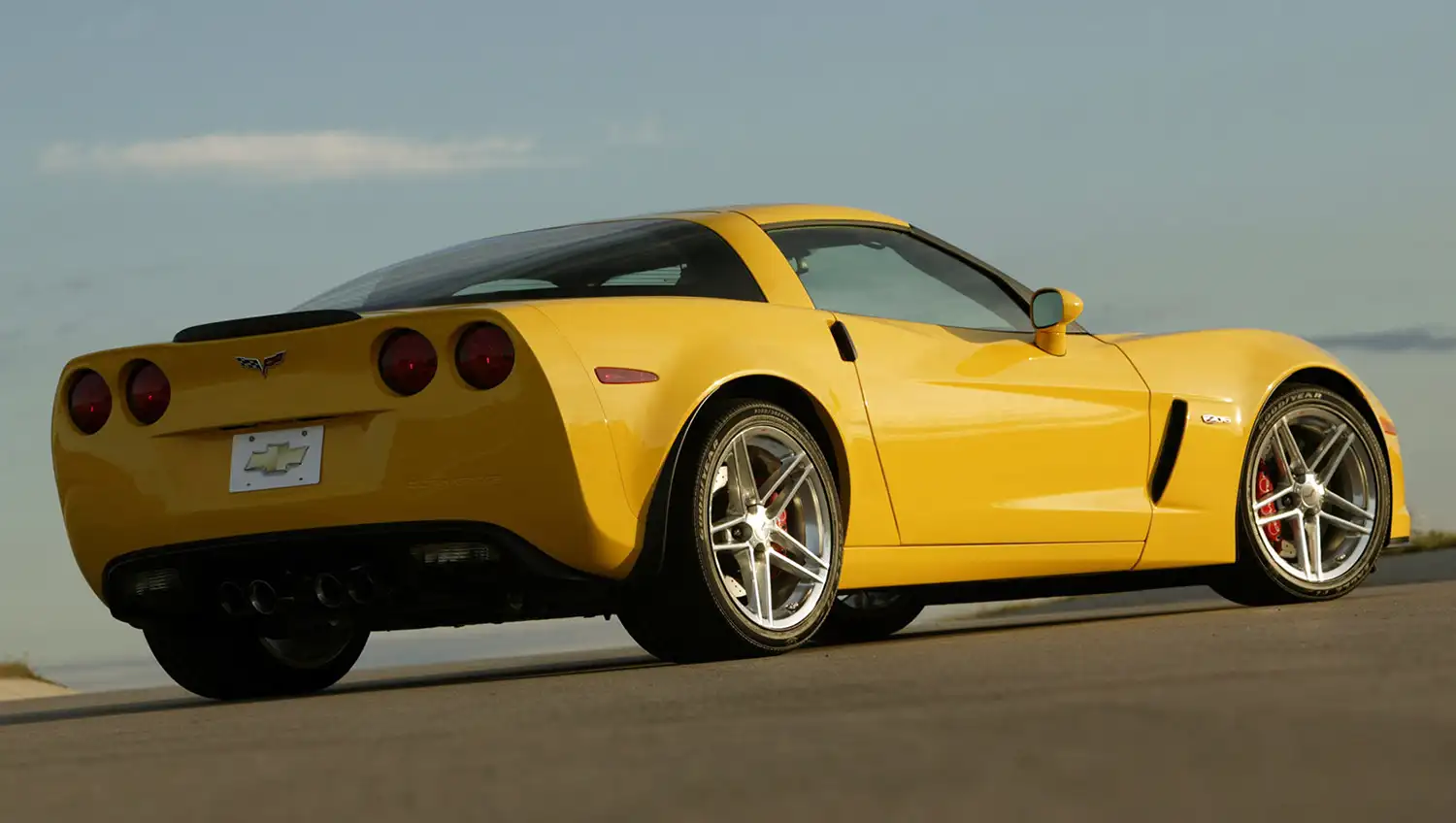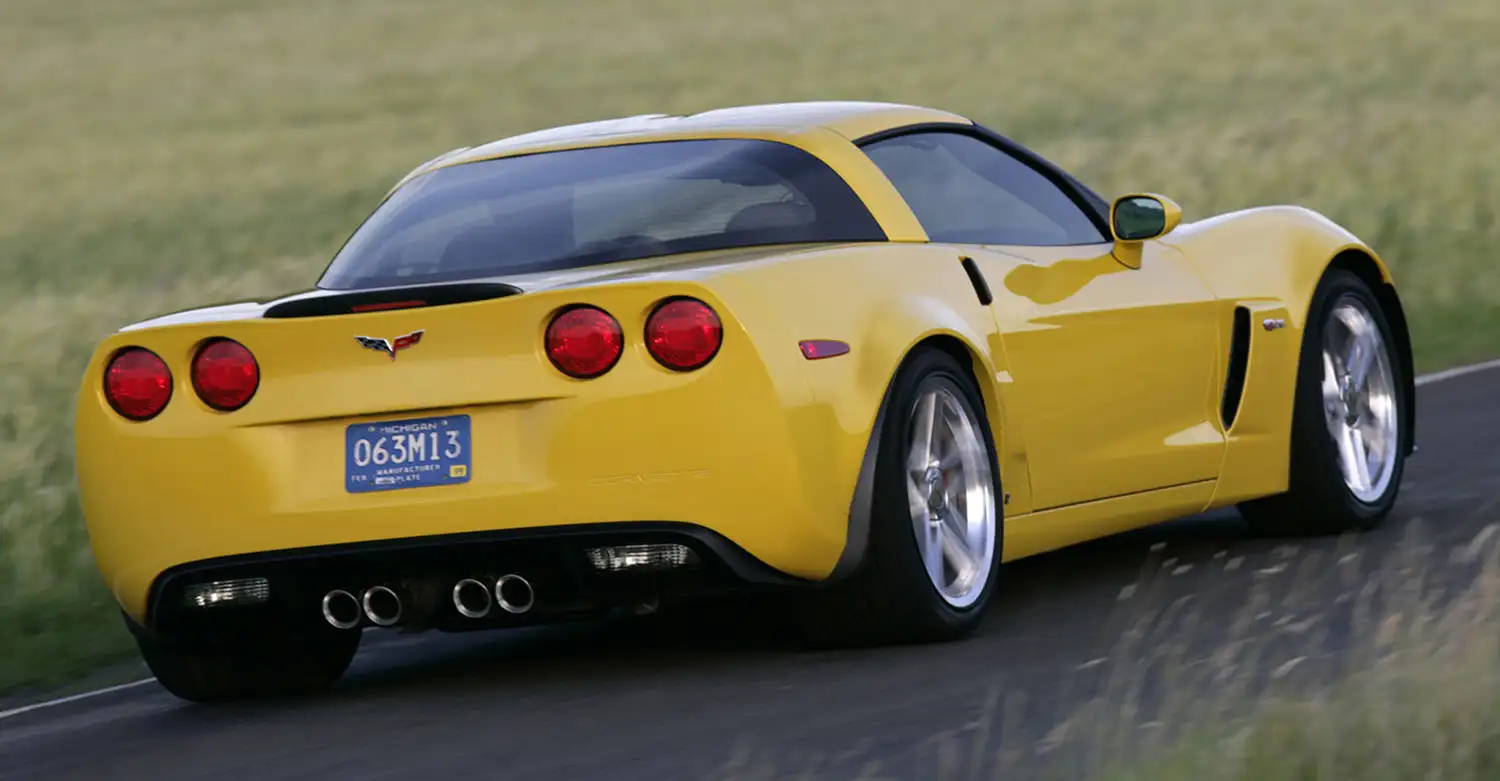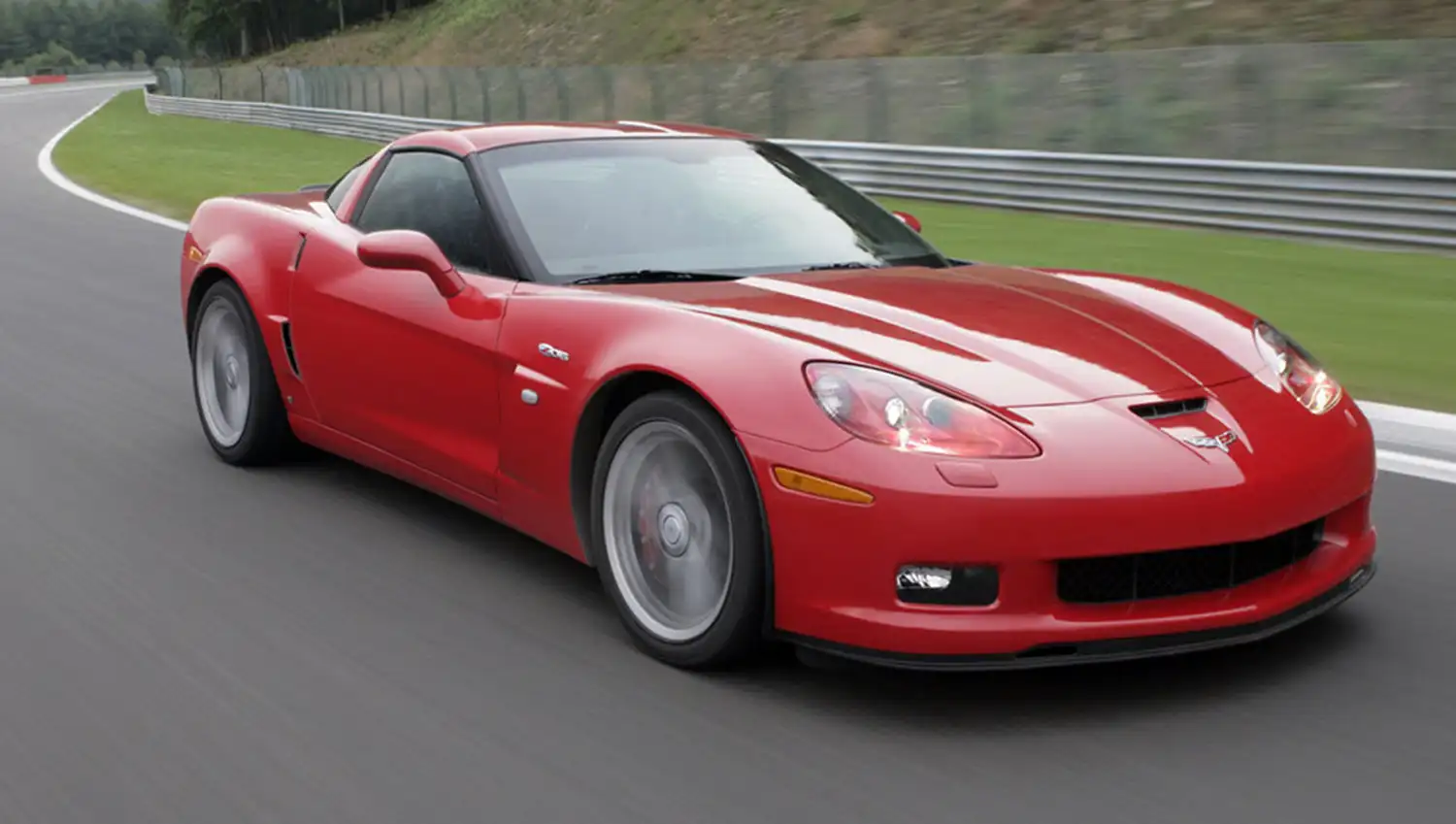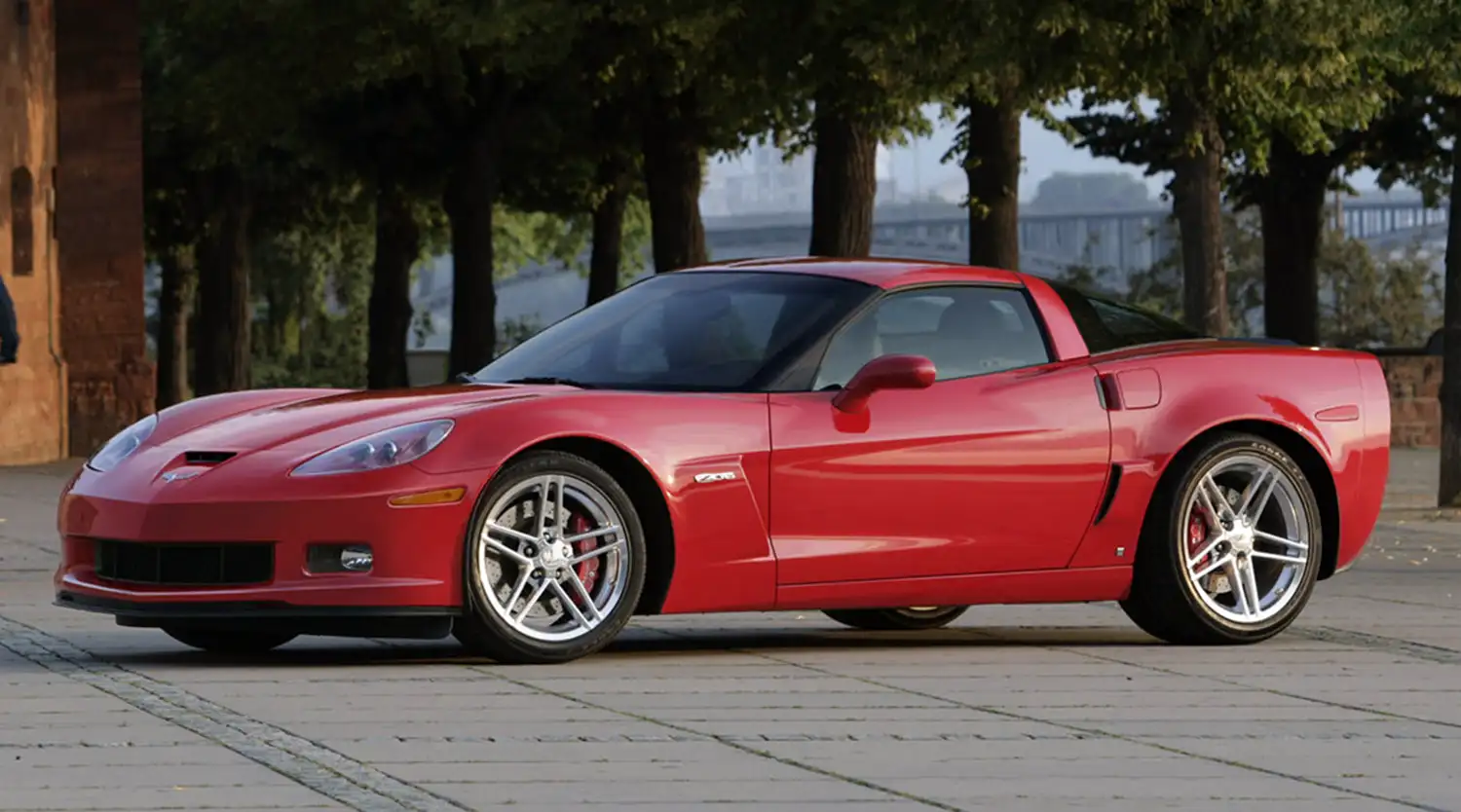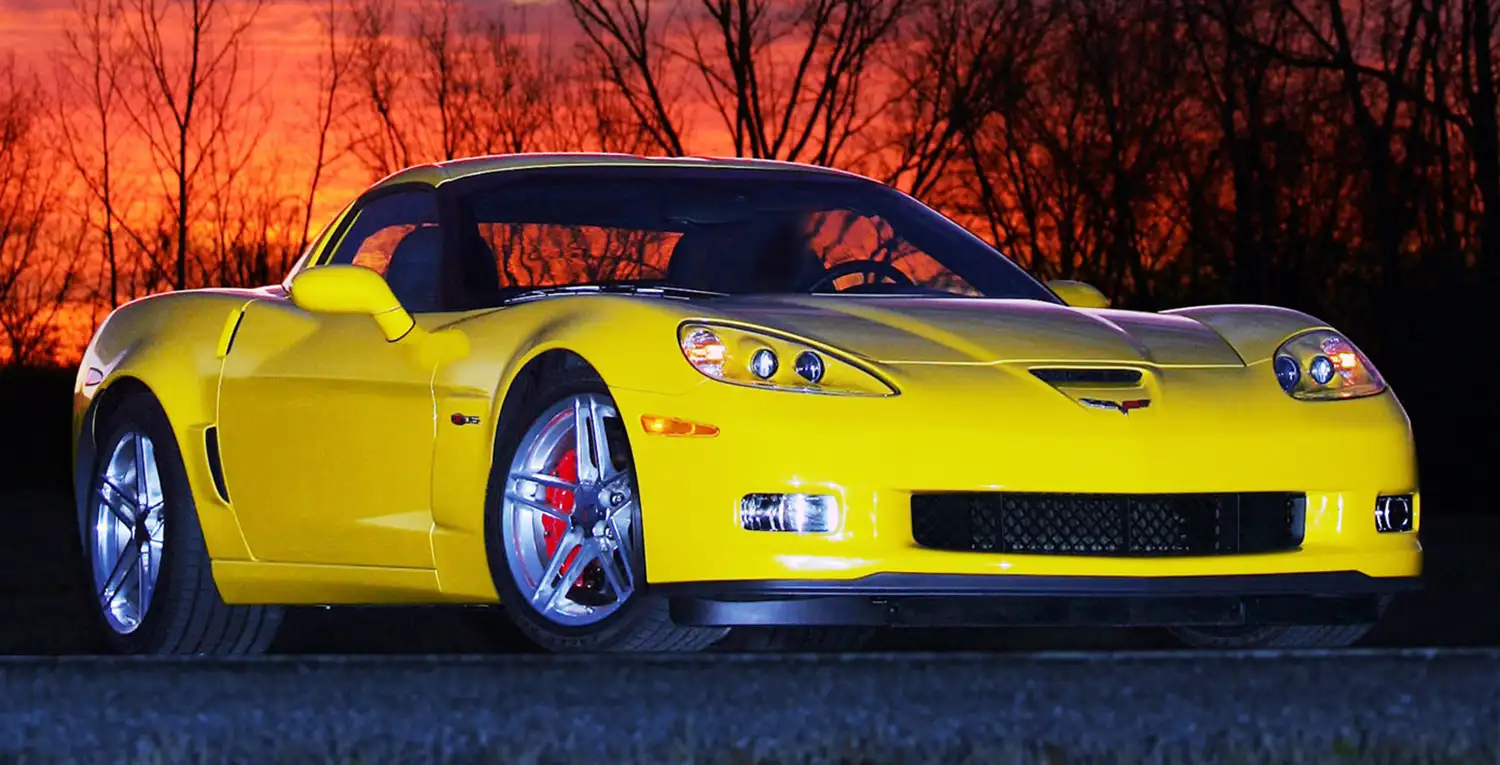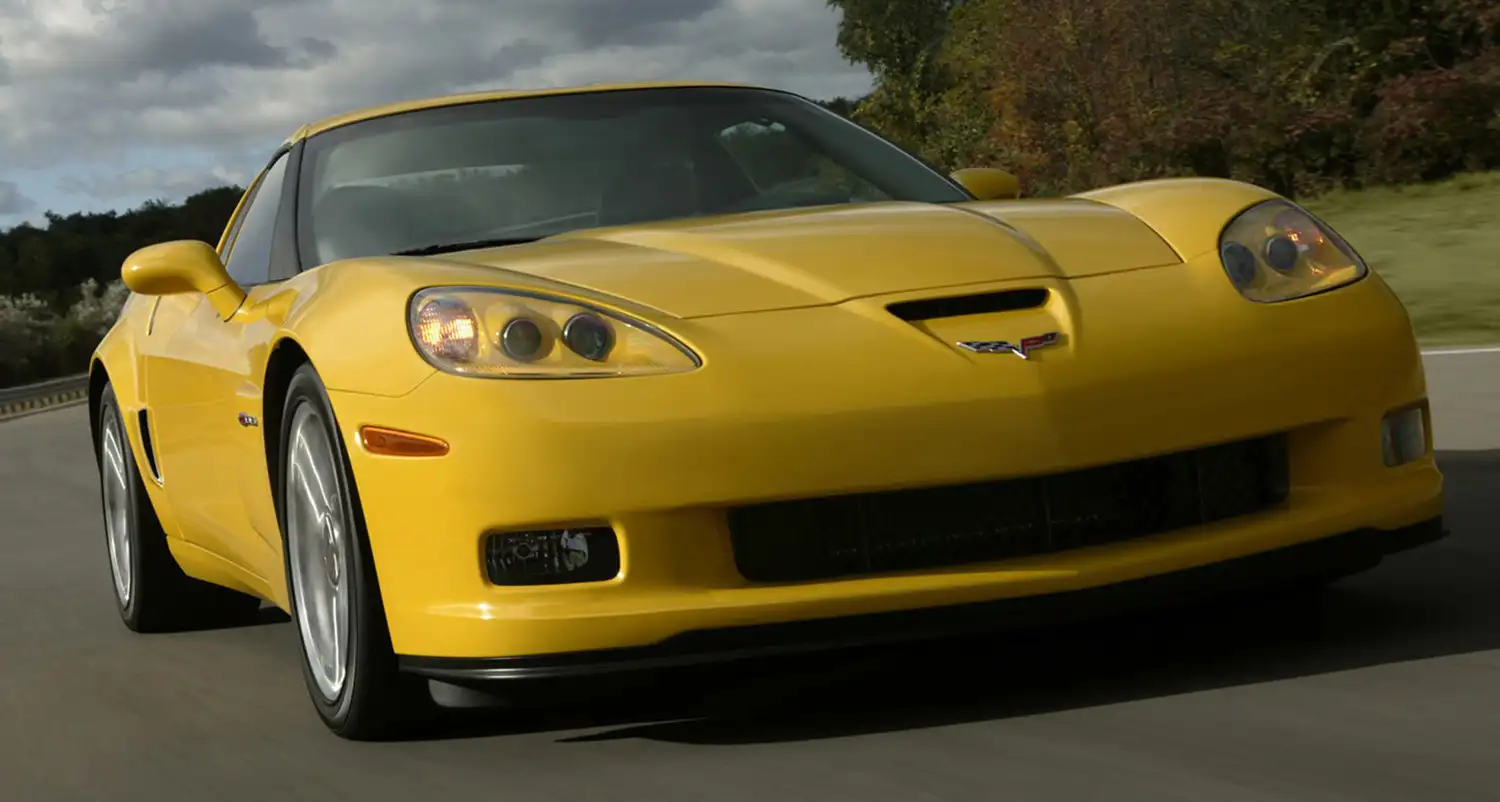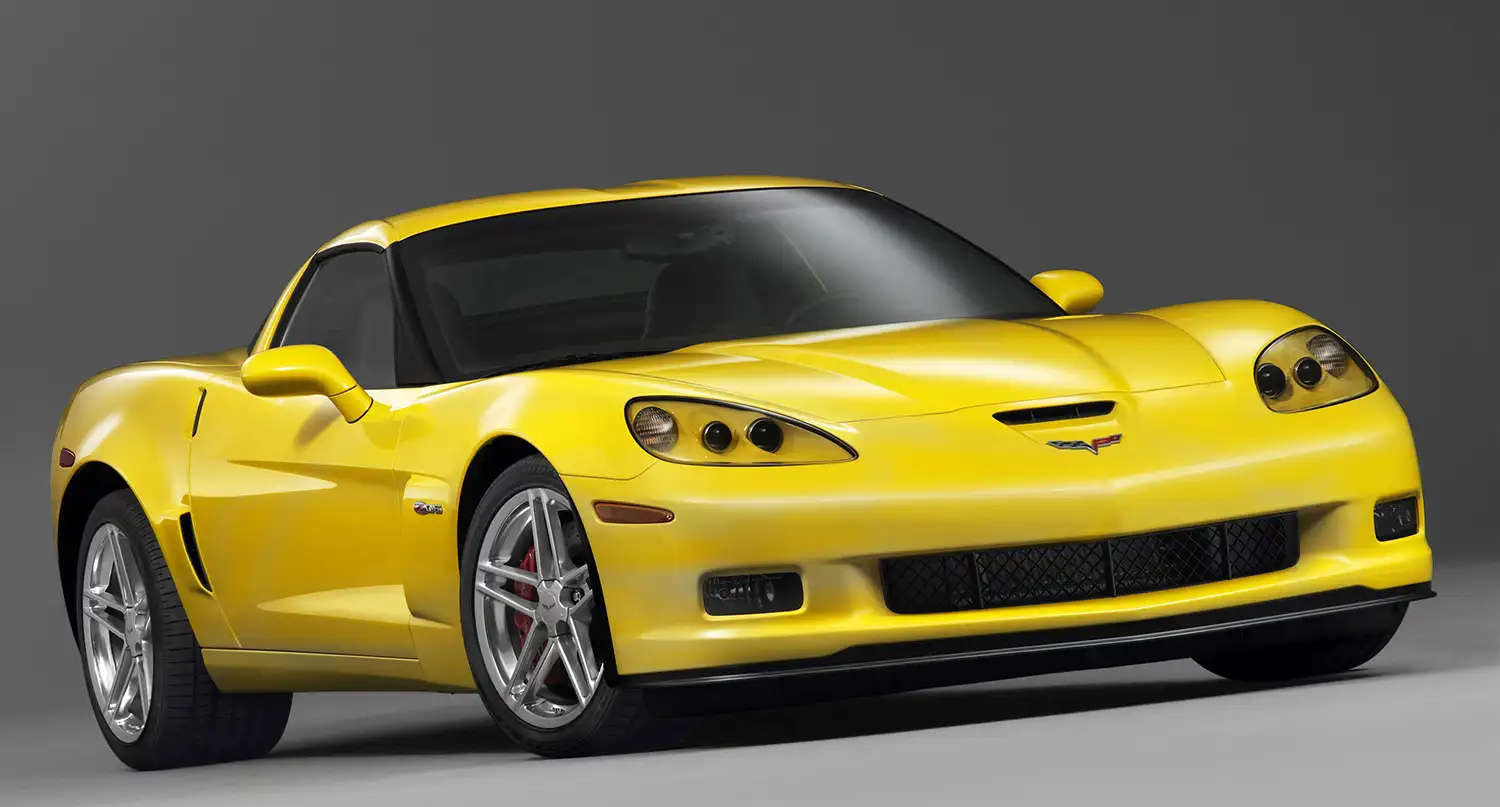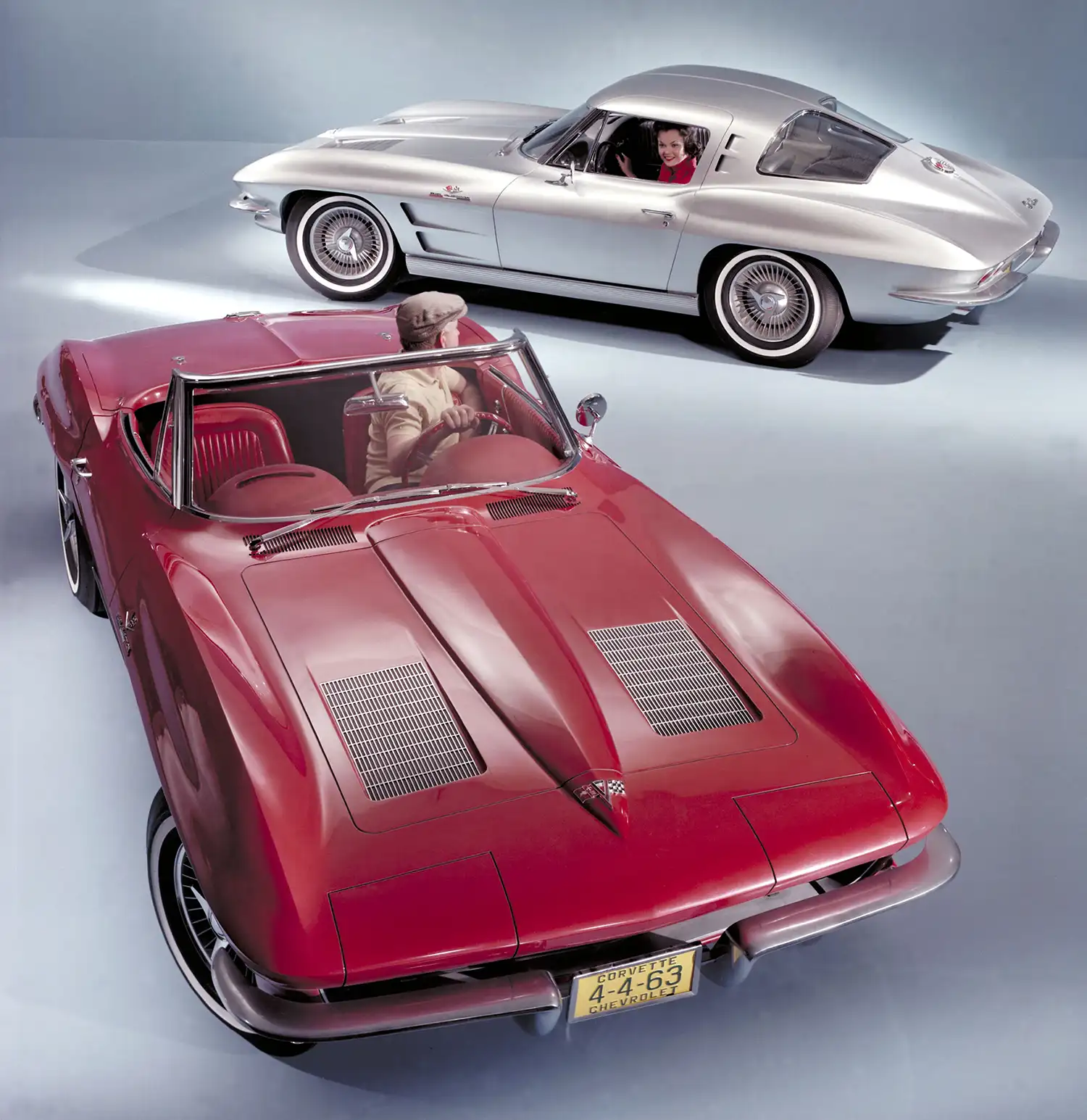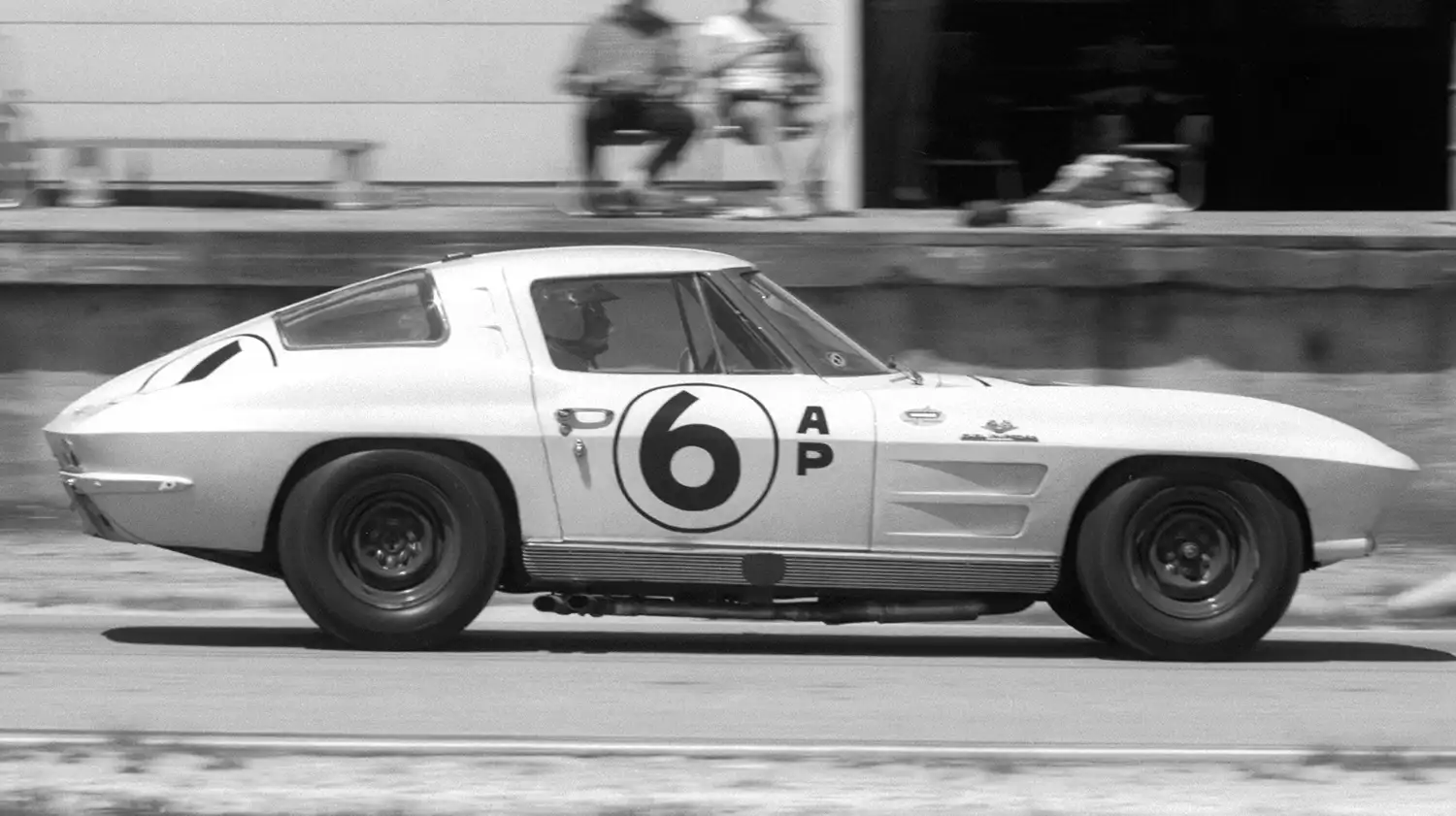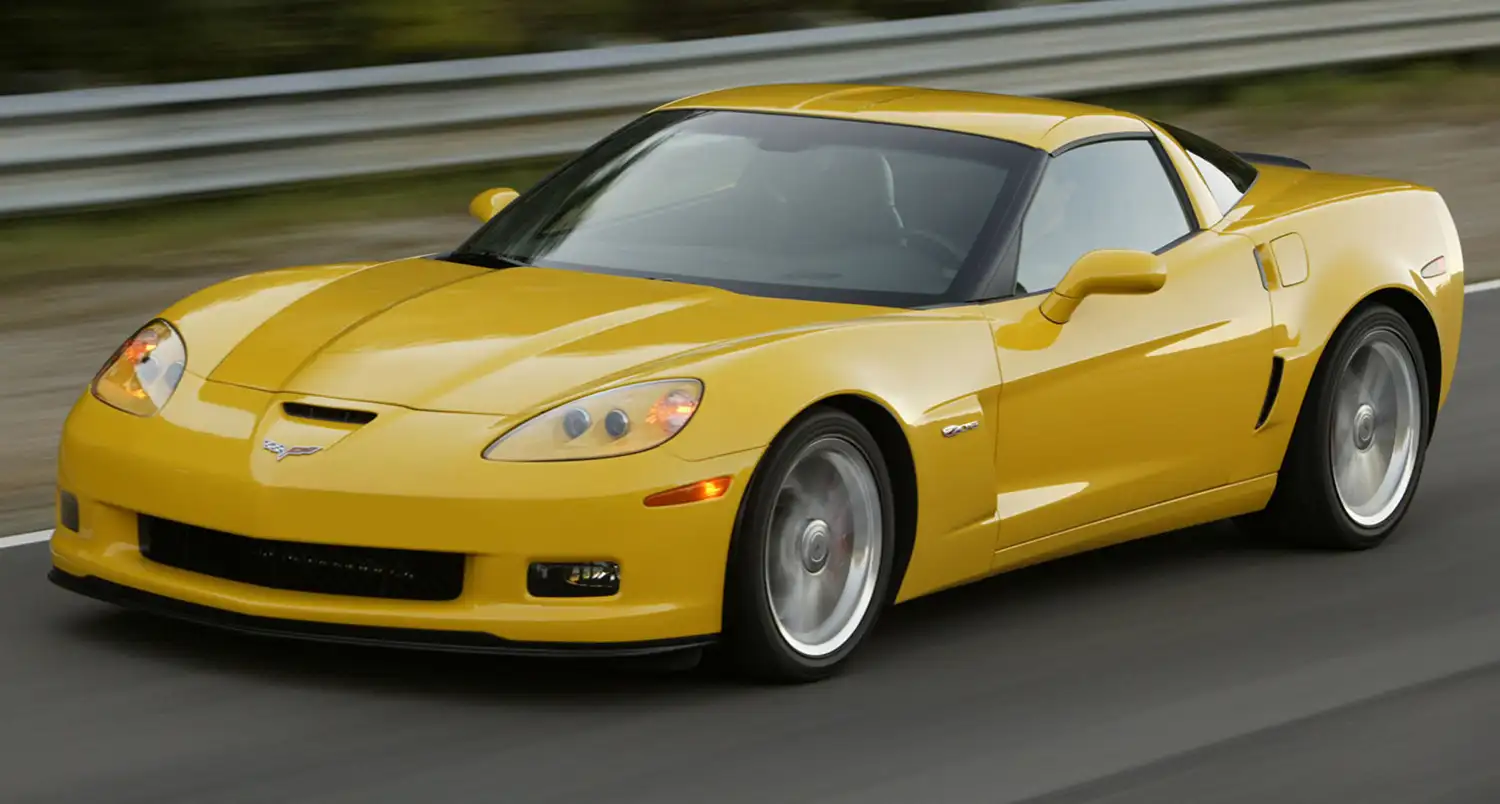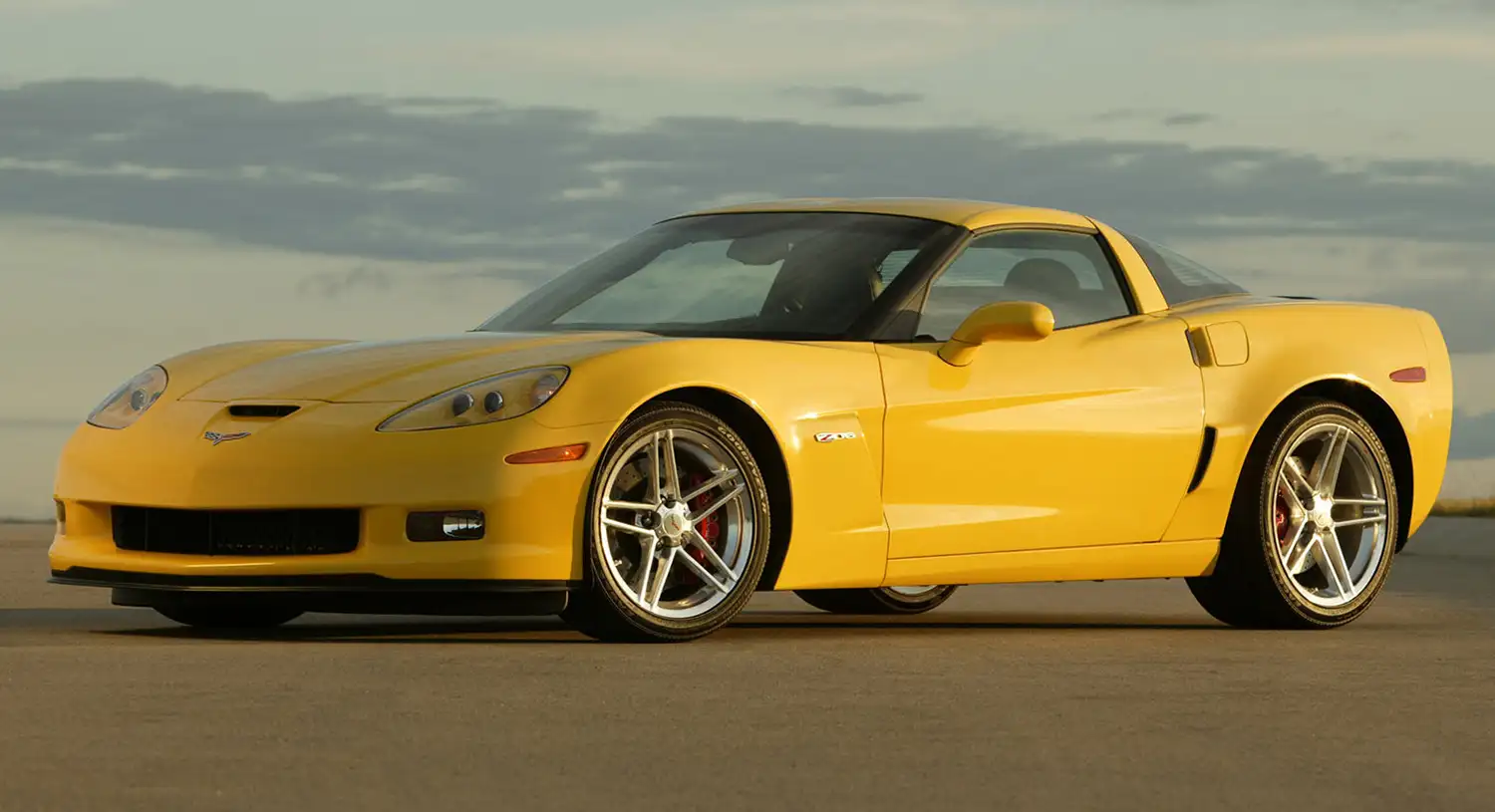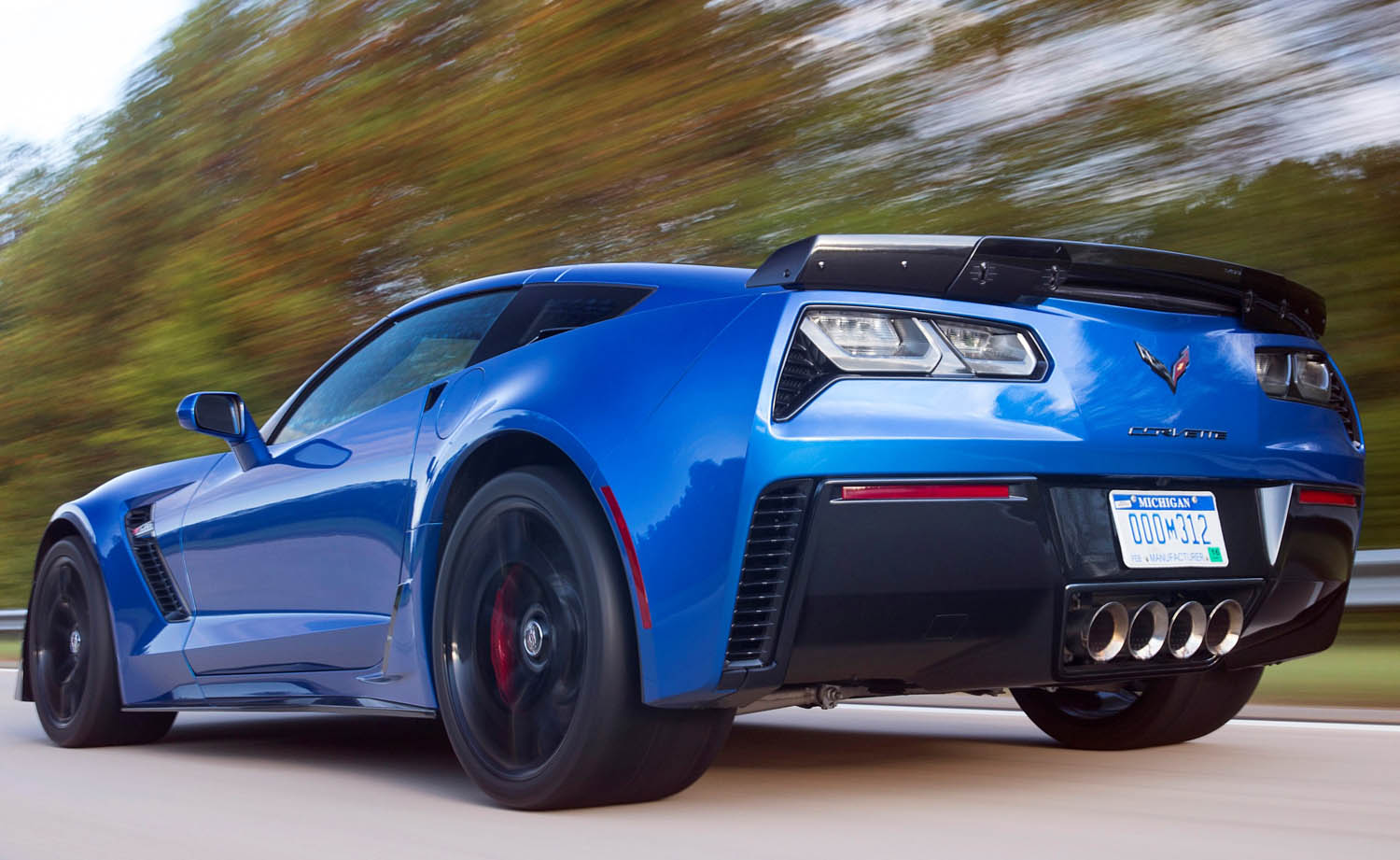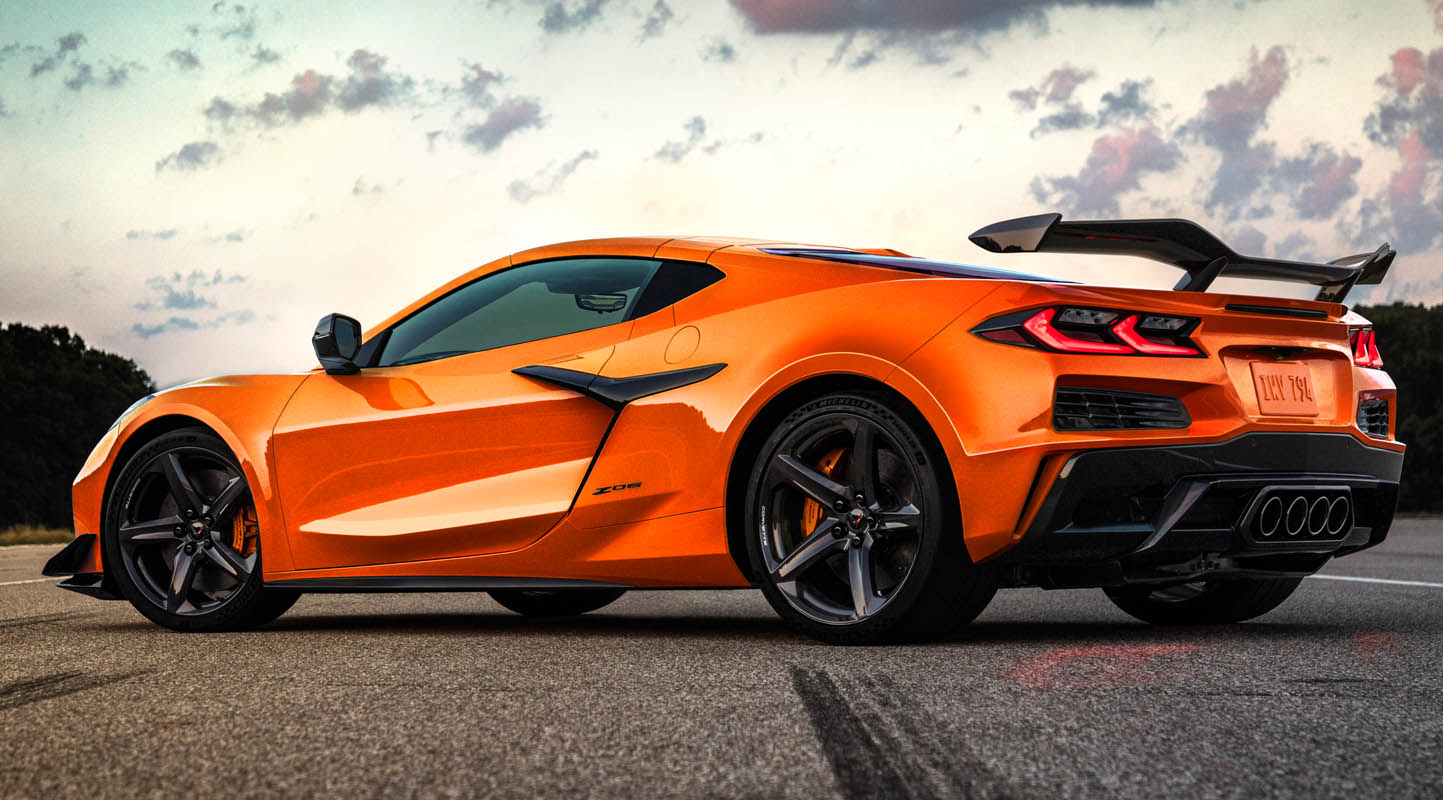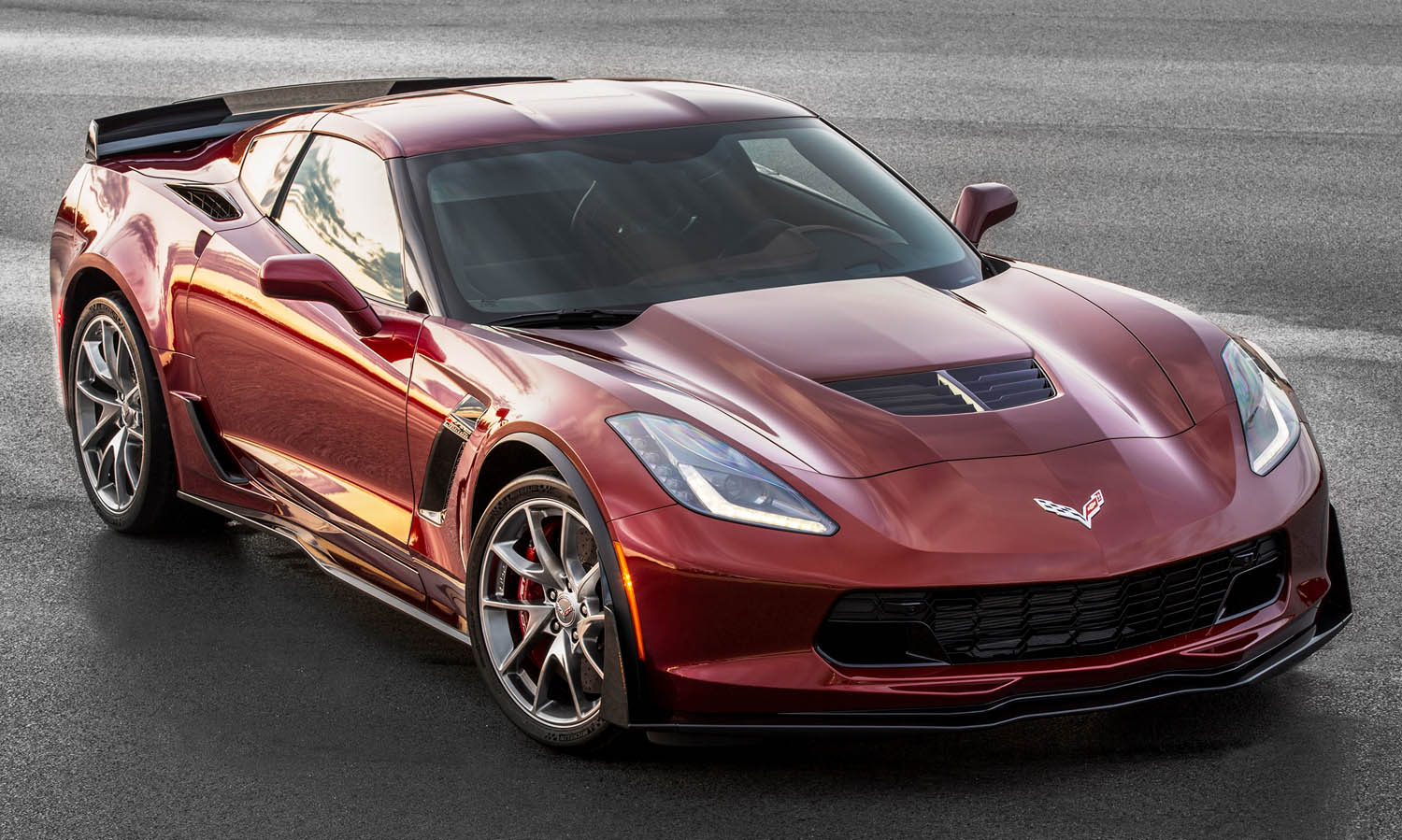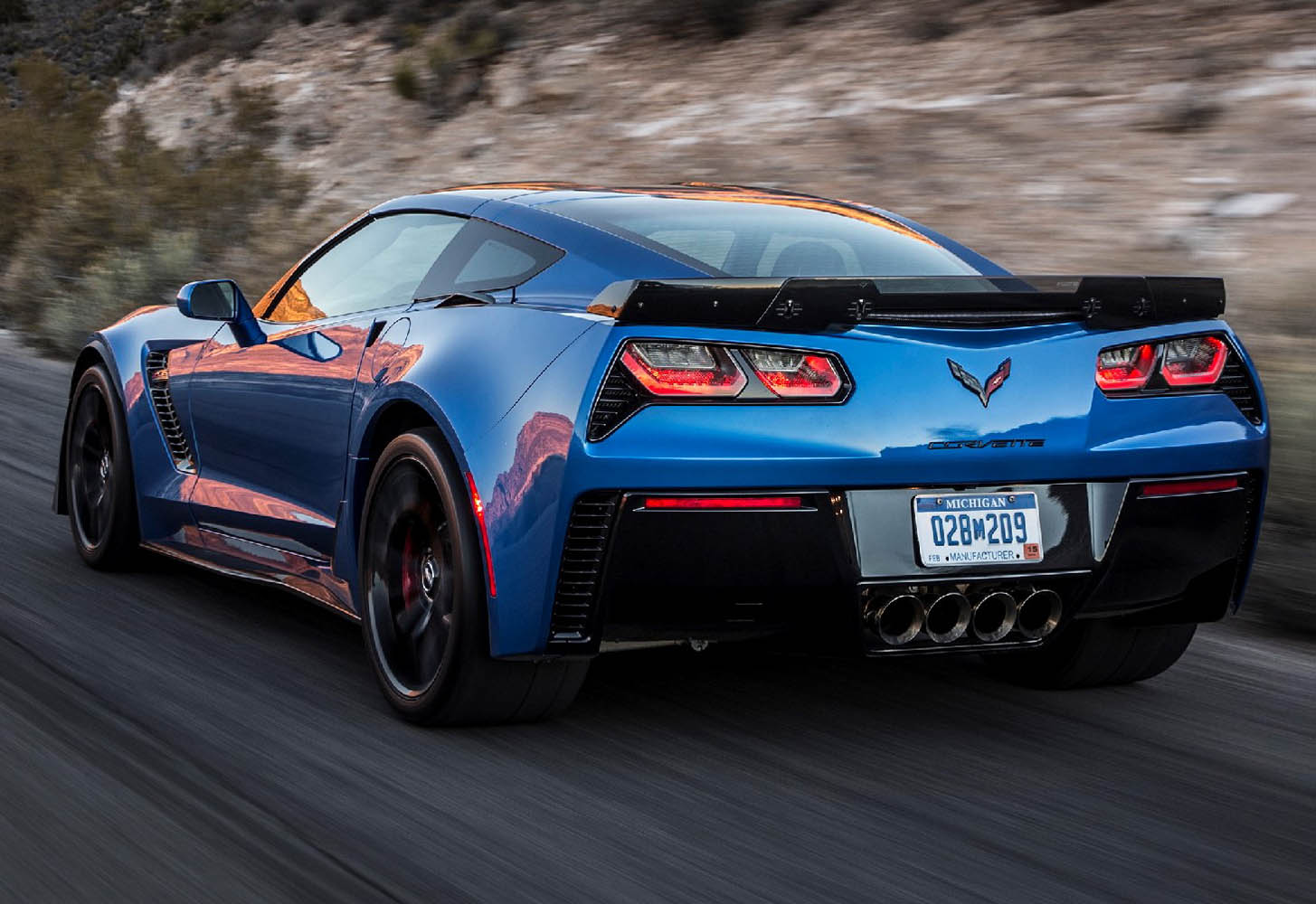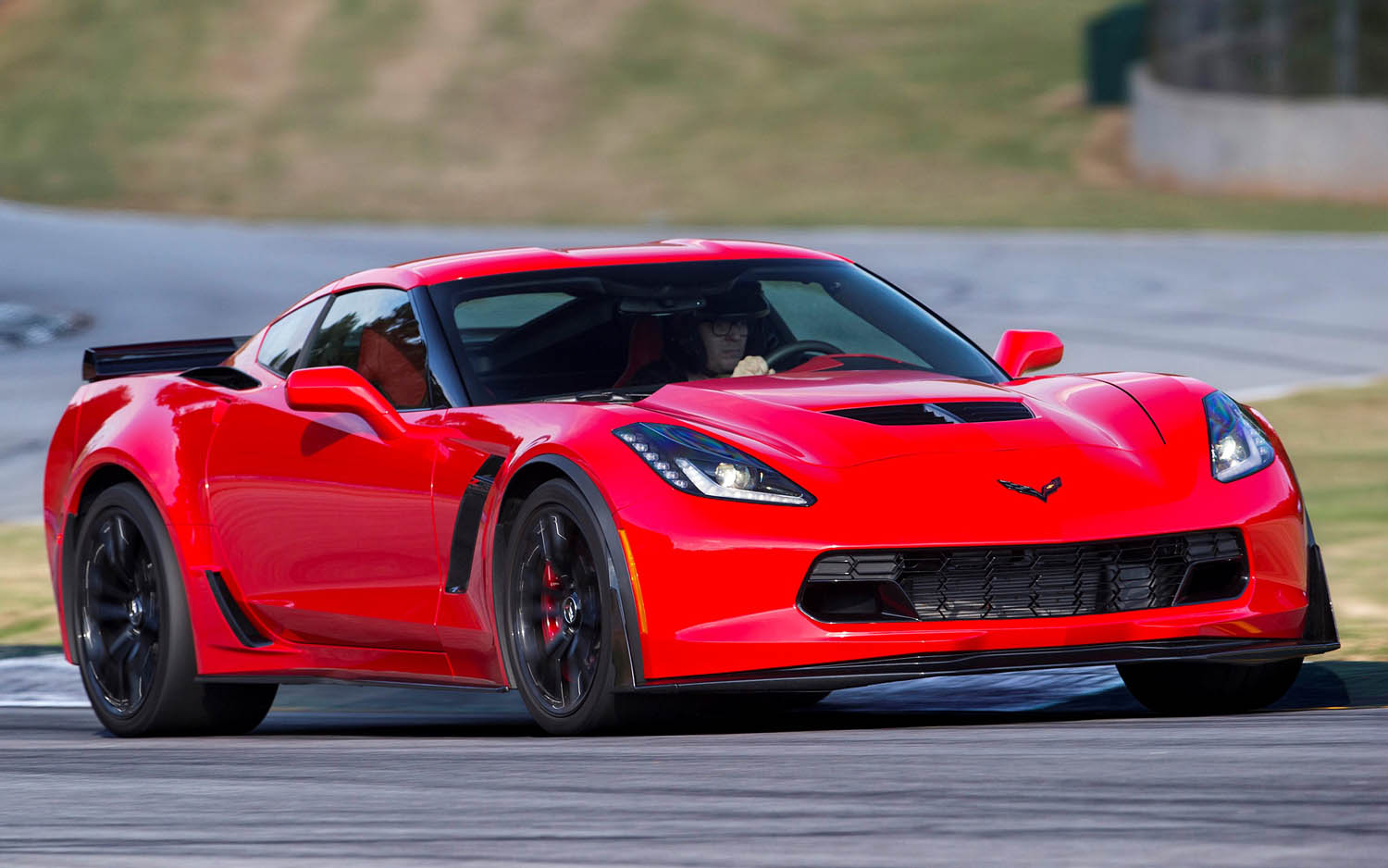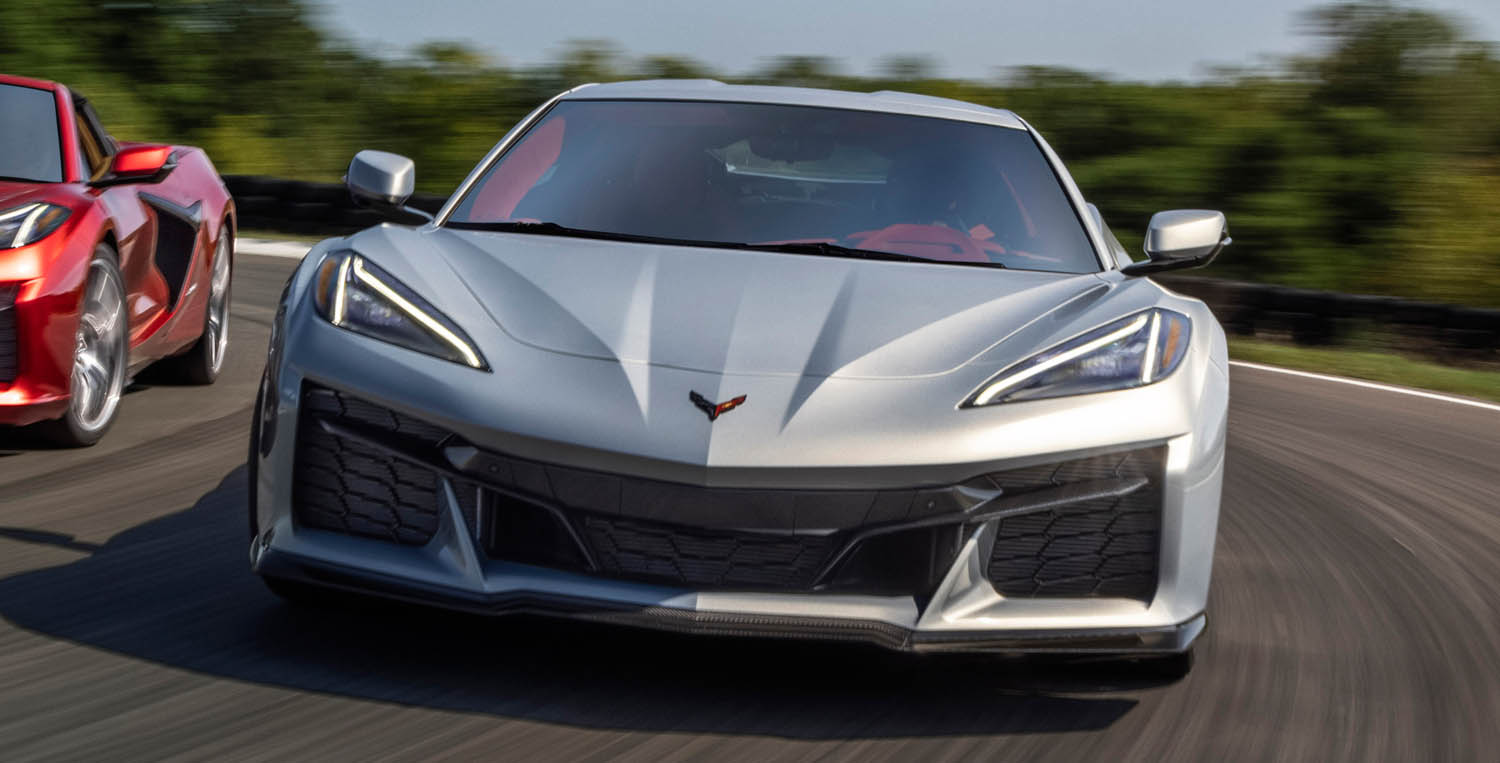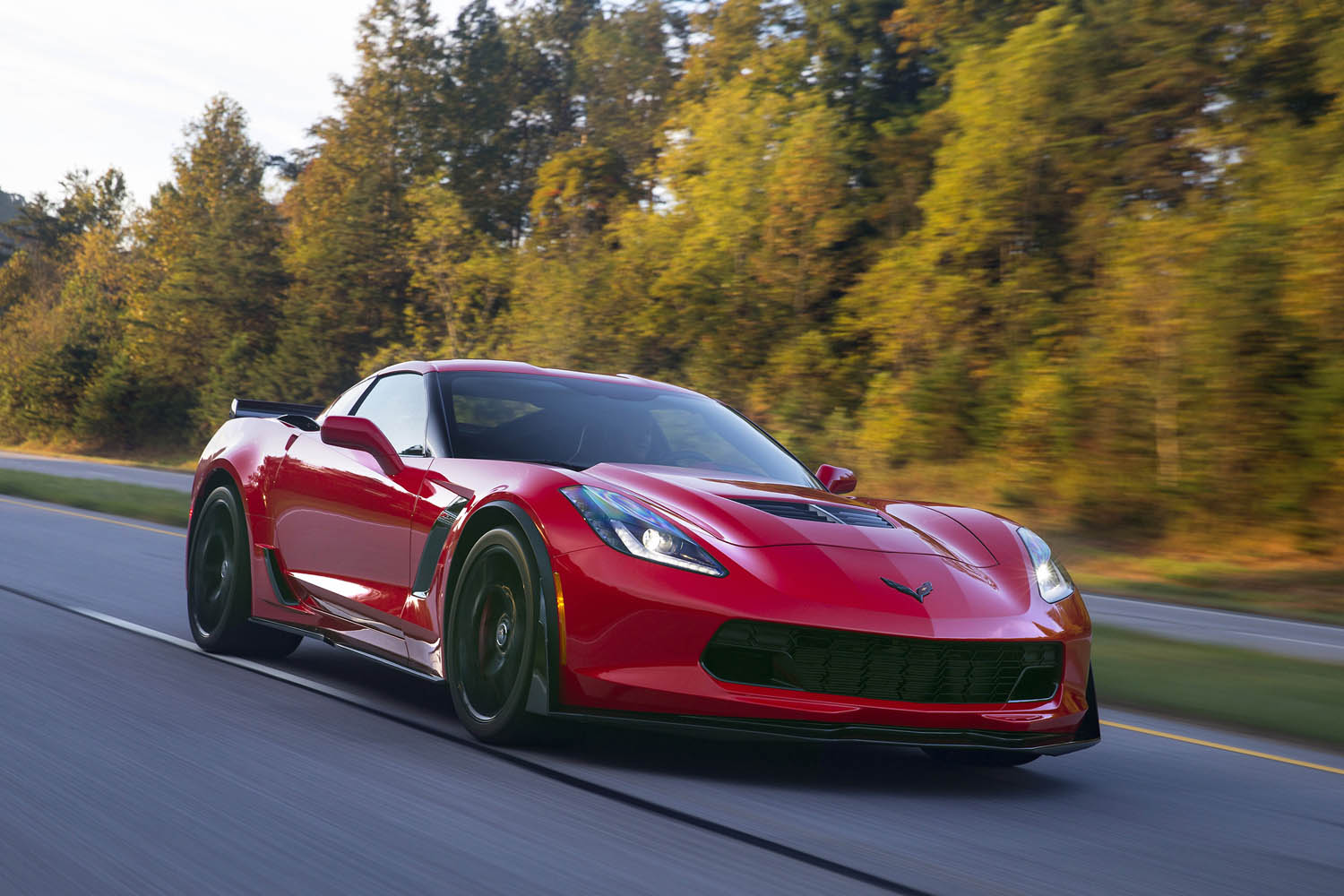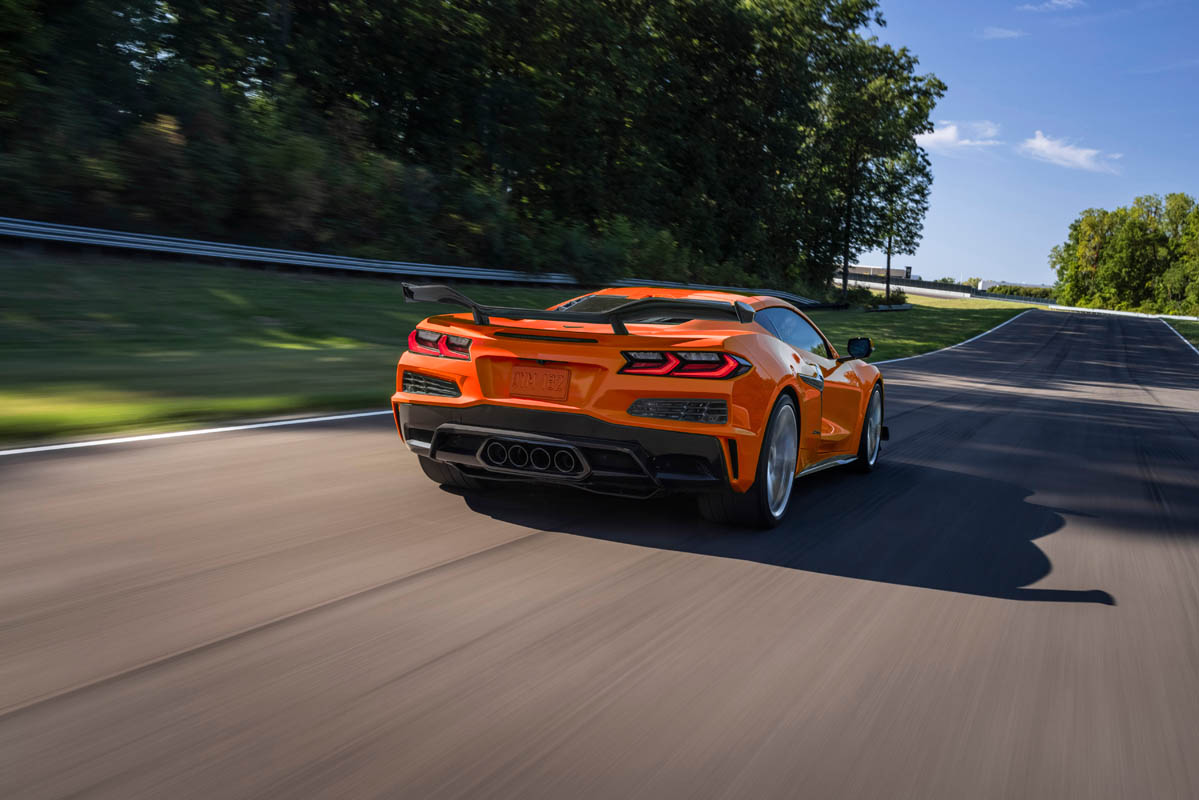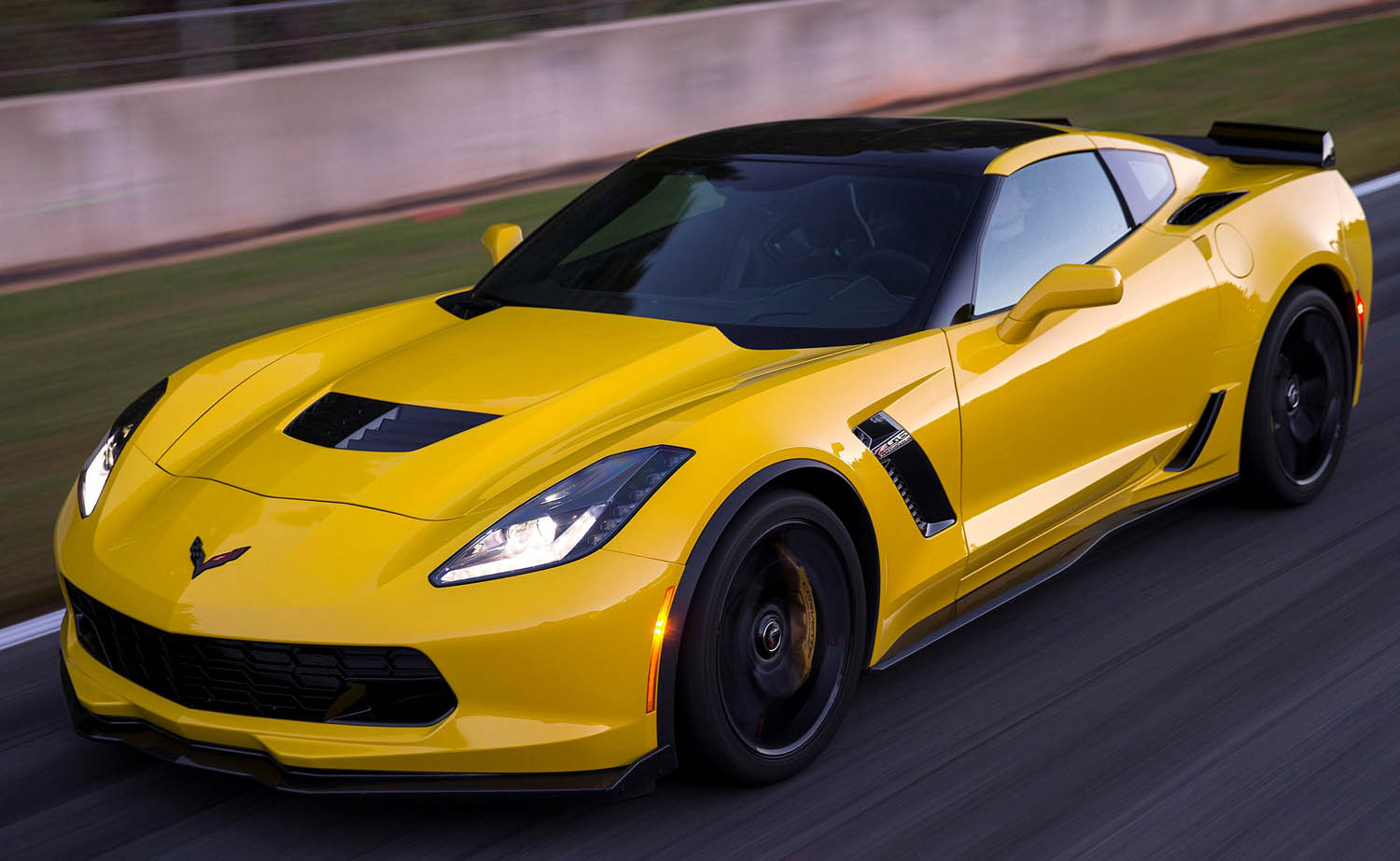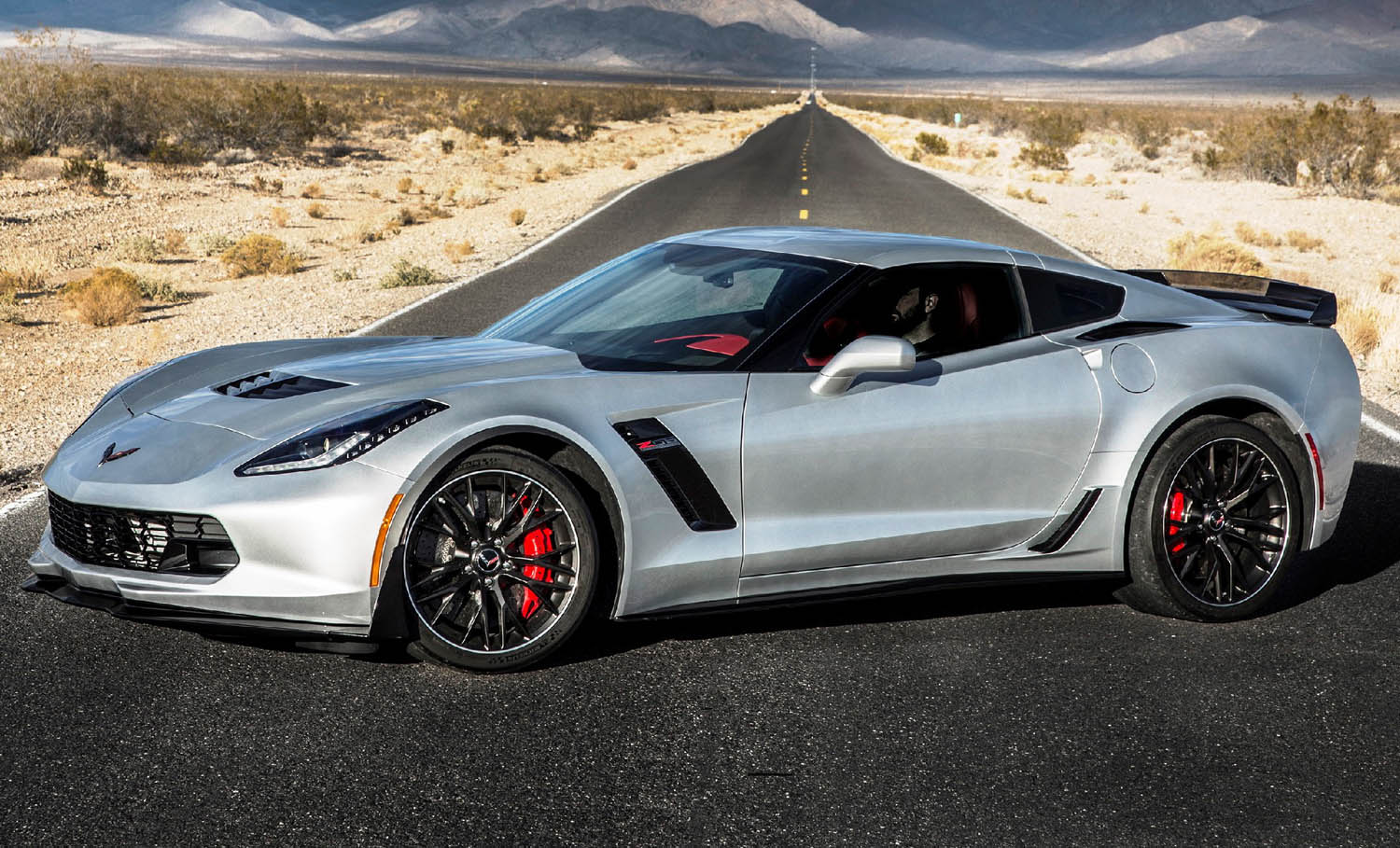
Chevrolet Corvette Z06 is the most capable in the history of the track-oriented model. The Z06 was first offered as an option package in 1963, directed at those who intended to use their Corvettes on a track.
The Z06 since has been offered in four of the Corvette’s seven production generations, each elevating the Corvette’s track capability:
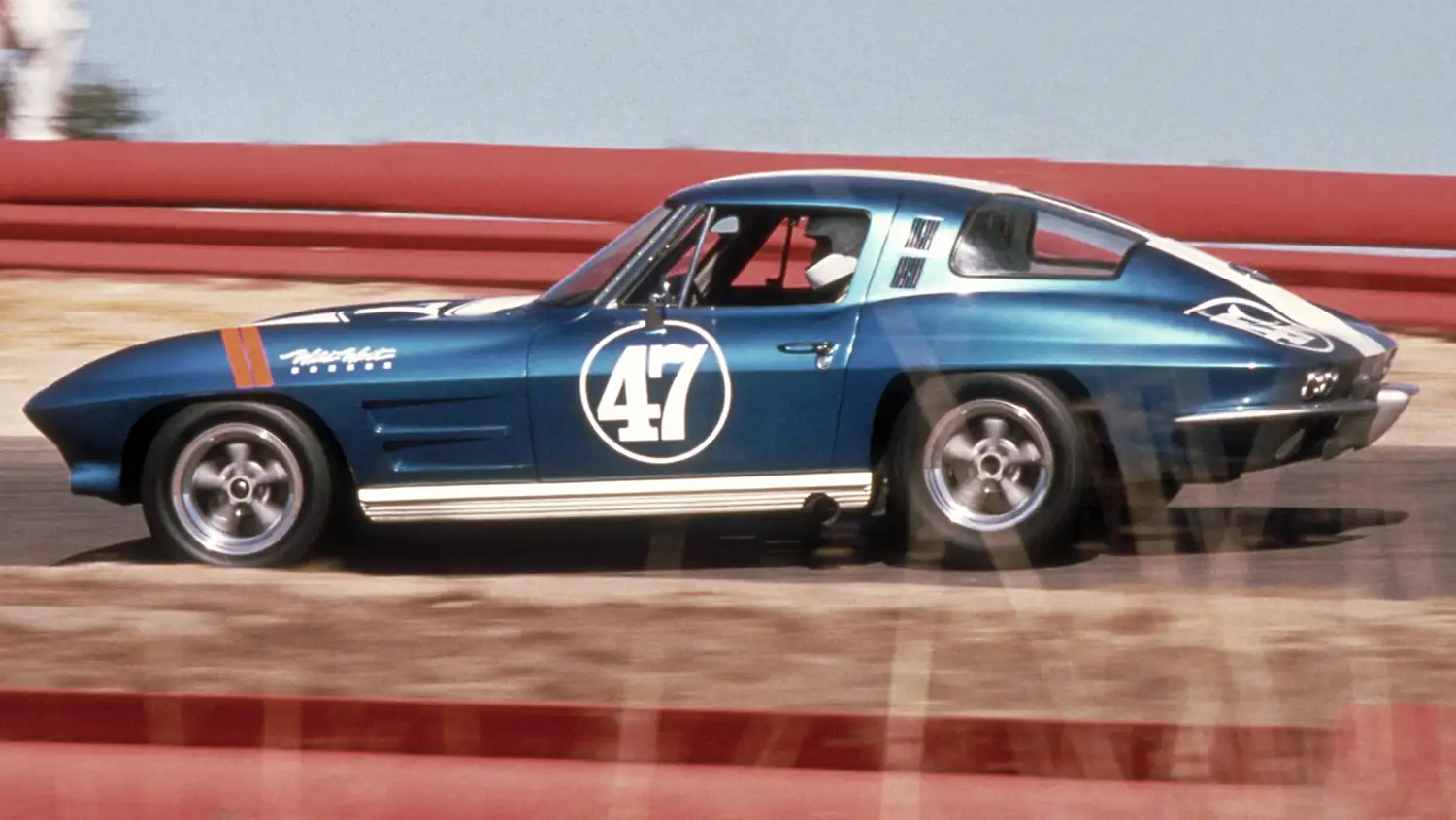
Second generation (1963) – Developed under famed Corvette engineer Zora Arkus-Duntov, the first Z06 package offered enhanced handling and braking capability with an available, larger fuel tank that reduced the need for refueling during a race. Power came from a fuel-injected small block V-8 engine, supported by a four-speed manual transmission and Positraction rear axle. Only 199 were built.
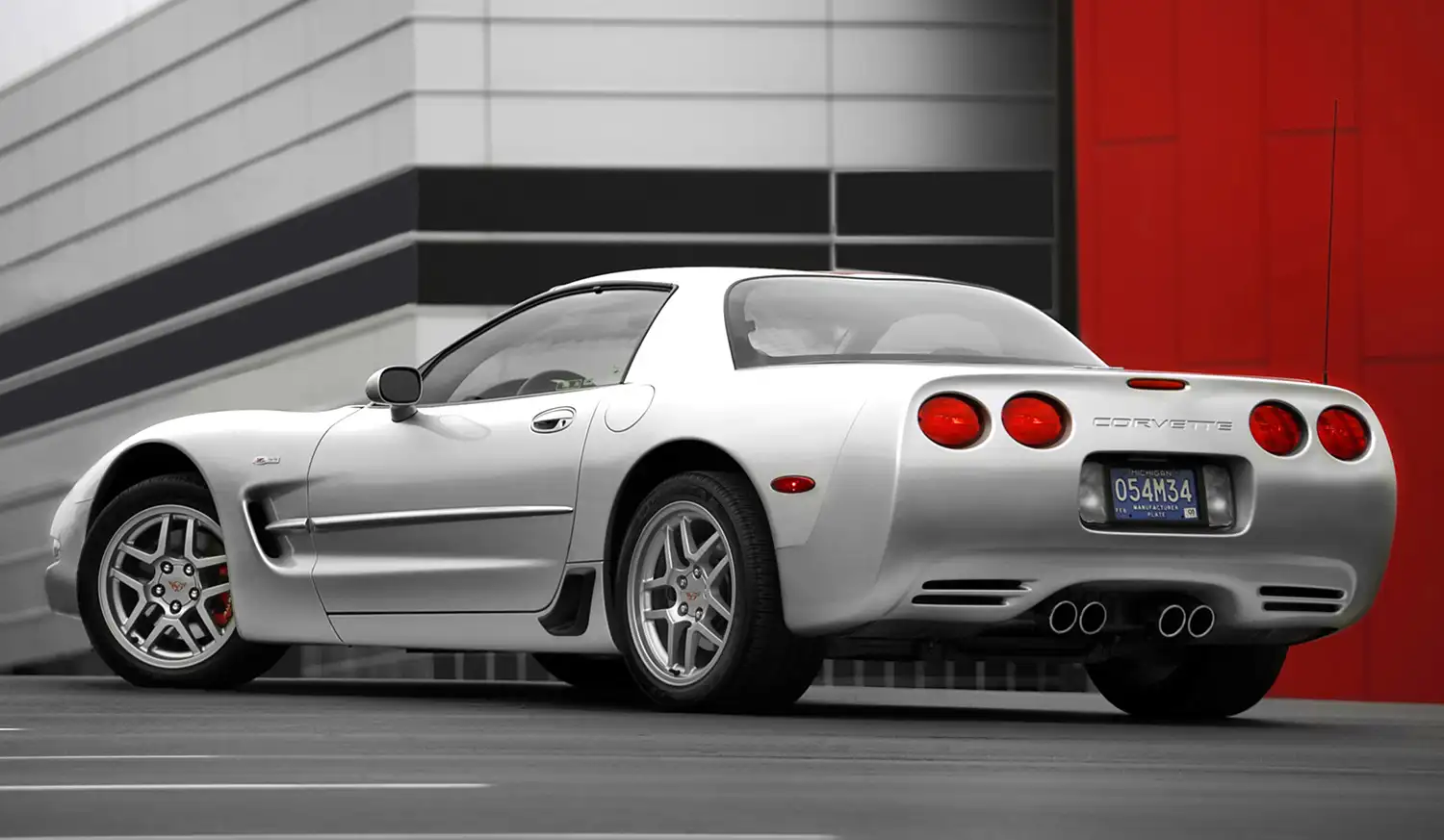
Fifth generation (2001-2004) – Combining a lower curb weight with higher horsepower, the fifth-generation Corvette Z06 was one of the fastest production cars on a track – a capability confirmed with a sub-8-minute lap around the Nürburgring. It was built on a unique fixed-roof hardtop body, with several lightweighting elements, such as thinner glass, a titanium exhaust system and more. Its unique LS6 small block engine delivered up to 405 horsepower through a six-speed manual transmission with specific, performance-optimized gearing. A total of 28,388 were built.
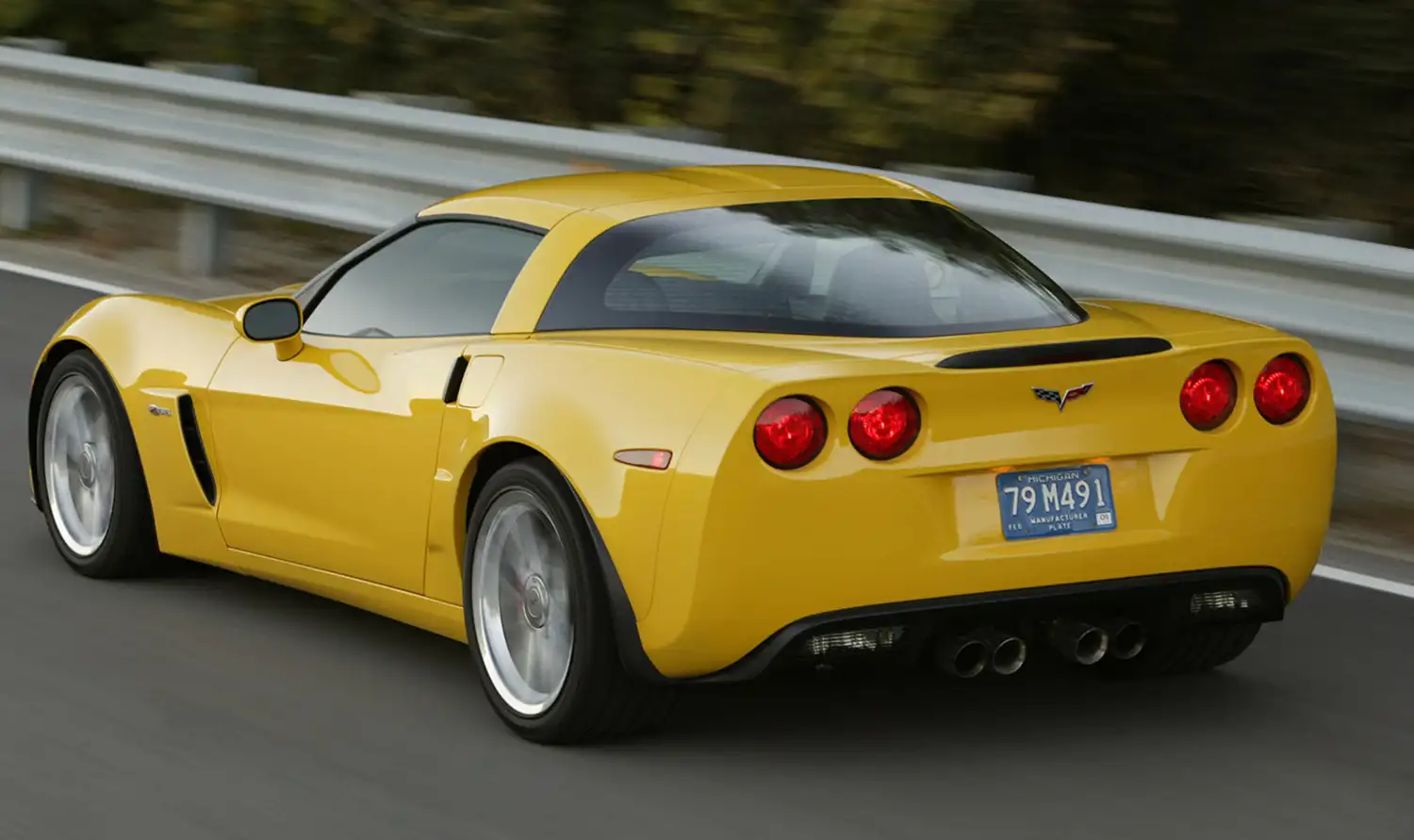
Sixth generation (2006-2013) – The sixth-generation Corvette Z06 featured its own, bespoke aluminum frame that was 136 pounds lighter than the steel frame on standard Corvette models. Under the hood, the 505-horsepower LS7 7.0L small block featured racing-derived technologies, including titanium connecting rods and a dry-sump oiling system. The Z07 Performance Package added carbon-ceramic matrix brakes and Michelin Pilot Sport Cup tires, enabling the Z06 to run the Nürburgring in 7:22.68. A total of 27,979 were built, including 740 with the Z07 performance package.
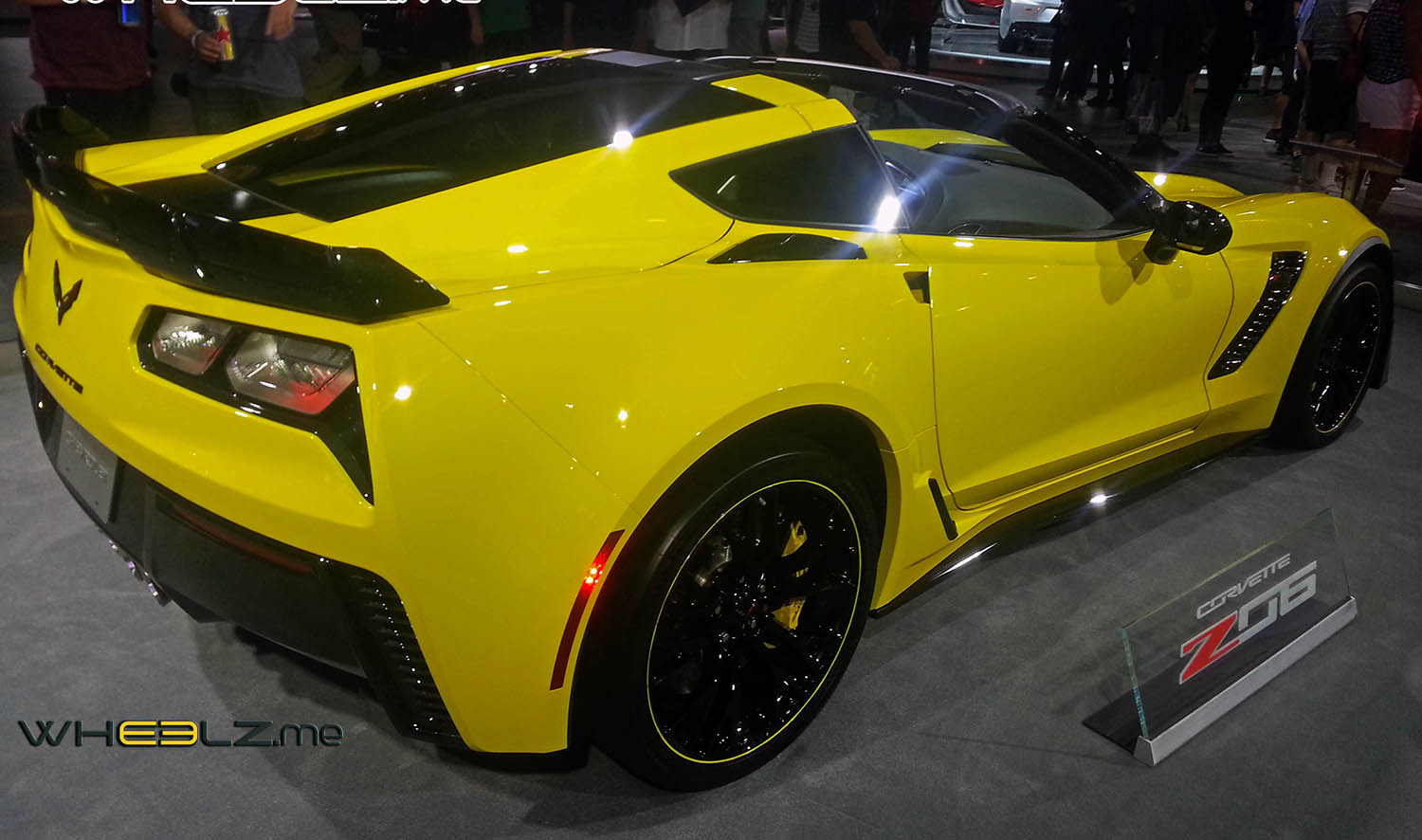
Seventh generation (2015) – The new 2015 Corvette Z06 is the most capable production Corvette ever. Developed in conjunction with the Corvette C7.R race car, it incorporates racing technology to deliver greater aerodynamic downforce, cornering grip and braking performance. With the available Z07 Performance Package – again fitted with Michelin Pilot Super Sport Cup tires and enhanced braking capability with carbon ceramic-matrix brakes – the new Z06 is faster on a track than the Corvette ZR1, in preliminary testing.
C8 Z06 – Click Here for full details
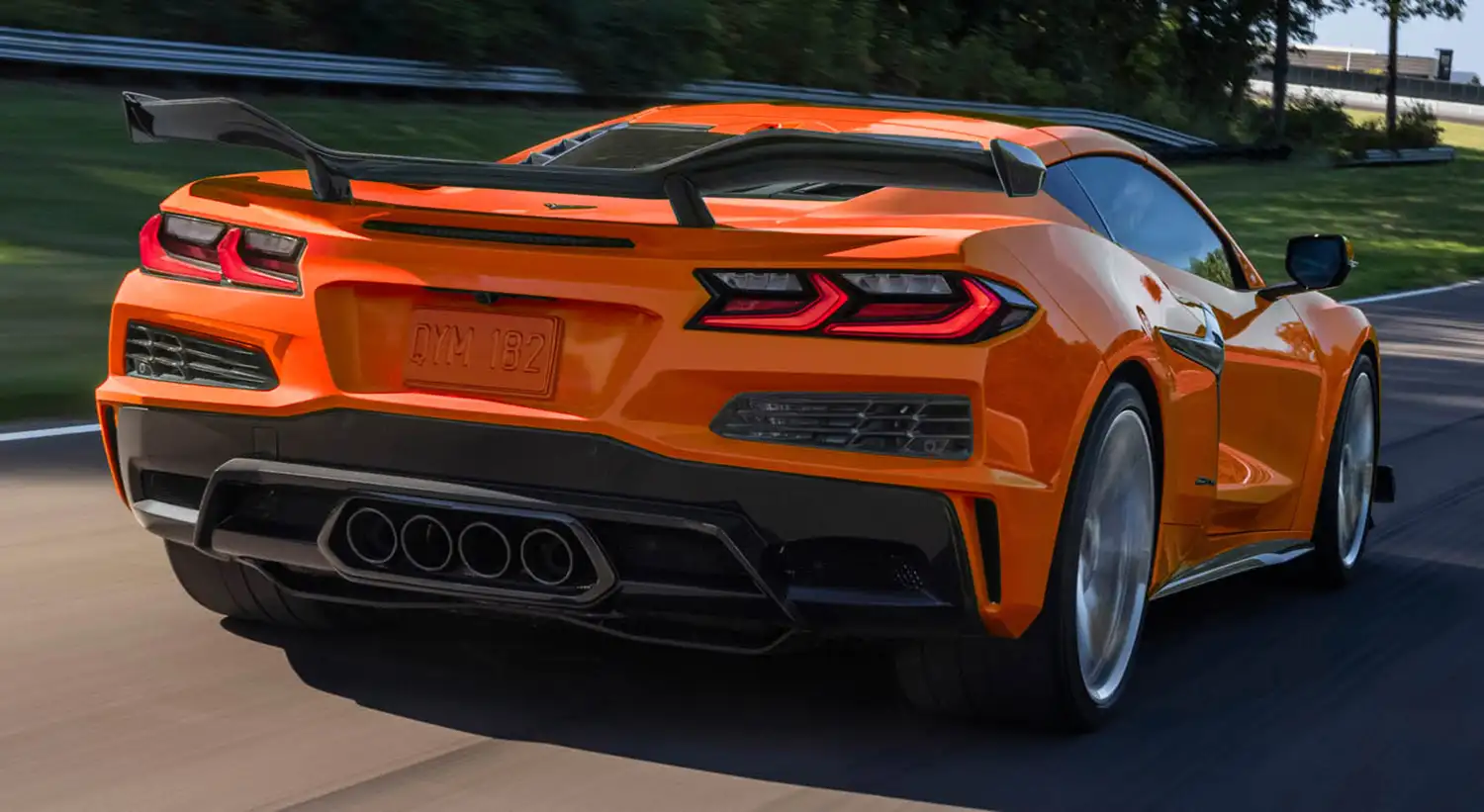
1963 Z06: Duntov’s legacy
The first Z06 was an option package on the iconic 1963 “split-window” Corvette, developed by Corvette’s legendary engineer and racing advocate Zora Arkus-Duntov. He successfully lobbied for the 1963 Corvette to offer a package for customers who intended to race the new car.
For those in the know, checking the RPO Z06 box on the Corvette’s order sheet added a thicker, 24mm (0.94-inch) front stabilizer bar, larger-diameter shock absorbers and springs that were nearly twice as stiff as standard parts. The Z06 package also featured:
- upgraded brake components, including sintered-metal brake linings, which stood up to heat and resisted wear better than conventional material
- a dual-circuit master cylinder and vacuum brake booster to enhance safety and reduce braking effort
These components would become industry standards but were still rare in regular-production vehicles of the era.
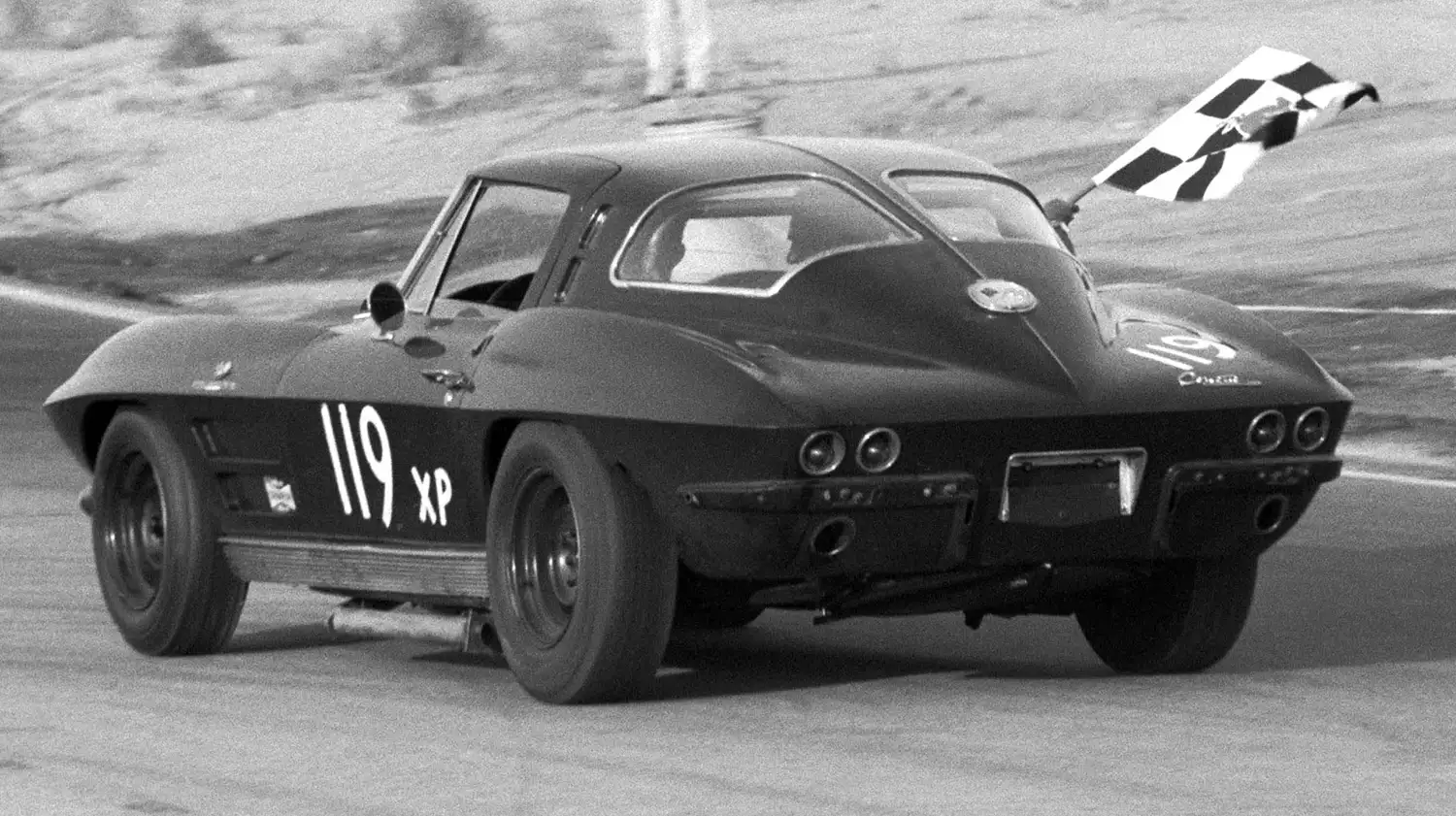
Possibly most significant for racing, the Z06 option could be combined with a larger, 36.5-gallon fiberglass fuel tank that allowed racers to stay on the track longer. Z06-equipped models quickly became known as “big tank” or “tanker” Corvettes and were originally limited to coupe models because the larger tank wouldn’t fit convertibles. Later, Chevrolet revised the package, making the regular 20-gallon fuel tank standard and the big tank an option. The change allowed the Z06 package to be ordered on a convertible. Only one is believed to have been built. The package originally added more than 40 percent to the Corvette’s base price. Aluminum knock-off wheels were also offered.
There was one engine available with the Z06 package – the 360-horsepower L84-code 327-cubic-inch small block, which featured an advanced mechanical fuel injection system. Corvette was a pioneer in fuel injection, having introduced it in 1957. A four-speed manual transmission and Positraction rear axle were also standard equipment.
In that pre-Internet era, few Corvette customers – even those with racing intentions – knew of the Z06 package. It wasn’t advertised, making word of mouth the primary source of information. Because most were purchased and used for racing, the attrition rate was comparatively high. Remaining, documented examples – especially the big-tank cars – are highly collectable.
2001-2004 Z06: Breaking the 8-minute Nürburgring lap
During the Corvette’s fifth generation, the Z06 name was reintroduced as a special 2001 model that took Corvette performance farther than it had ever been. Engineers started with the Corvette’s unique, limited-production hardtop body, which featured a fixed-roof design that was stiffer and lighter than the hatchback coupe. The car was further lightened with a titanium exhaust system, thinner glass, lighter wheels, conventional tires – in place of the standard run-flat tires – less sound-deadening material, a fixed radio antenna instead of a power antenna, and even a smaller, lighter battery.
The results shaved about 100 pounds off the weight of a conventional coupe model. The car also introduced rear-brake cooling ducts integrated in the rear fenders, which would become a signature styling cue.
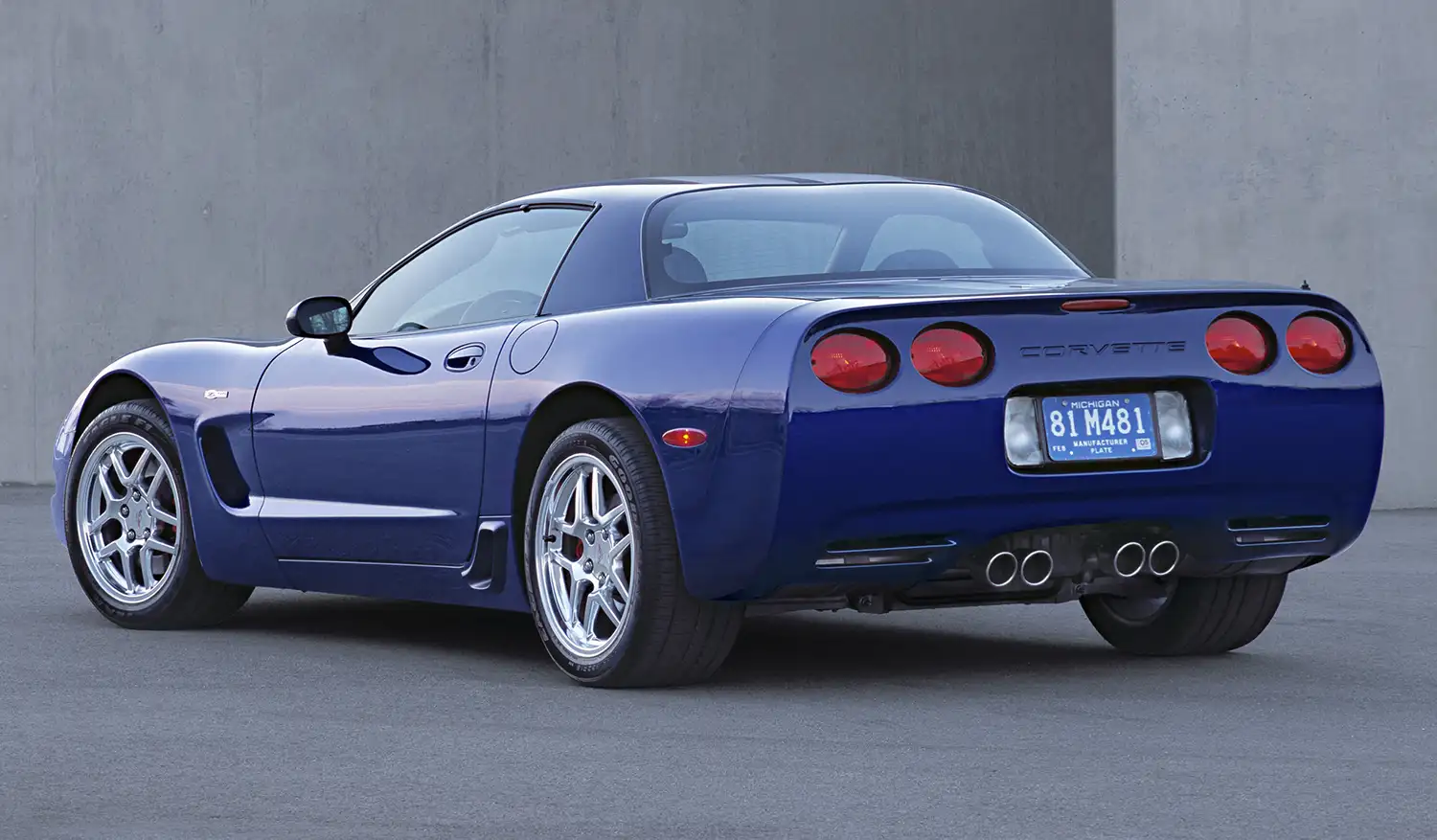
On the other side of the power-to-weight equation is horsepower and to that end, the 2001 Z06 used an exclusive LS6 version of the Gen III small block engine. If featured unique internal parts, including a “hotter” camshaft and higher-compression pistons, and an enhanced cylinder block design for greater bay-to-bay breathing, helping it produce 385 horsepower. Further enhancements contributed to an increase to 405 horsepower in 2002. The engine was backed by a six-speed manual transmission with Z06-specific gear ratios.
Like the original 1963 Z06, the fifth-generation car included chassis and suspension components optimized for the track. Its exclusive FE4 suspension package featured larger-diameter, hollow stabilizer bars that also had thicker walls for greater stiffness; larger-diameter shock absorbers compared to standard models, quicker steering – 2.46 turns lock to lock vs. 2.66 on other models – and a larger wheel-and-tire package, featuring Goodyear Eagle F1 SC tires mounted on lighter, stiffer forged aluminum wheels.
By the end of its production run, the fifth-generation-based Corvette Z06 was already benefitting from technology used on the successful Corvette Racing program, including lightweight carbon fiber. A special 2004 24 Hours of Le Mans Commemorative Edition – acknowledging Corvette Racing’s historic 1-2 class finish at the famous 24-hour endurance race – used a carbon fiber hood to shave 10 pounds off the nose of the car, enhancing its balance.
The 2004 Corvette Z06 proved its capability on the global stage, when it became one of the first production cars at the time to run Germany’s famous Nürburgring road course in less than 8 minutes (7:56).
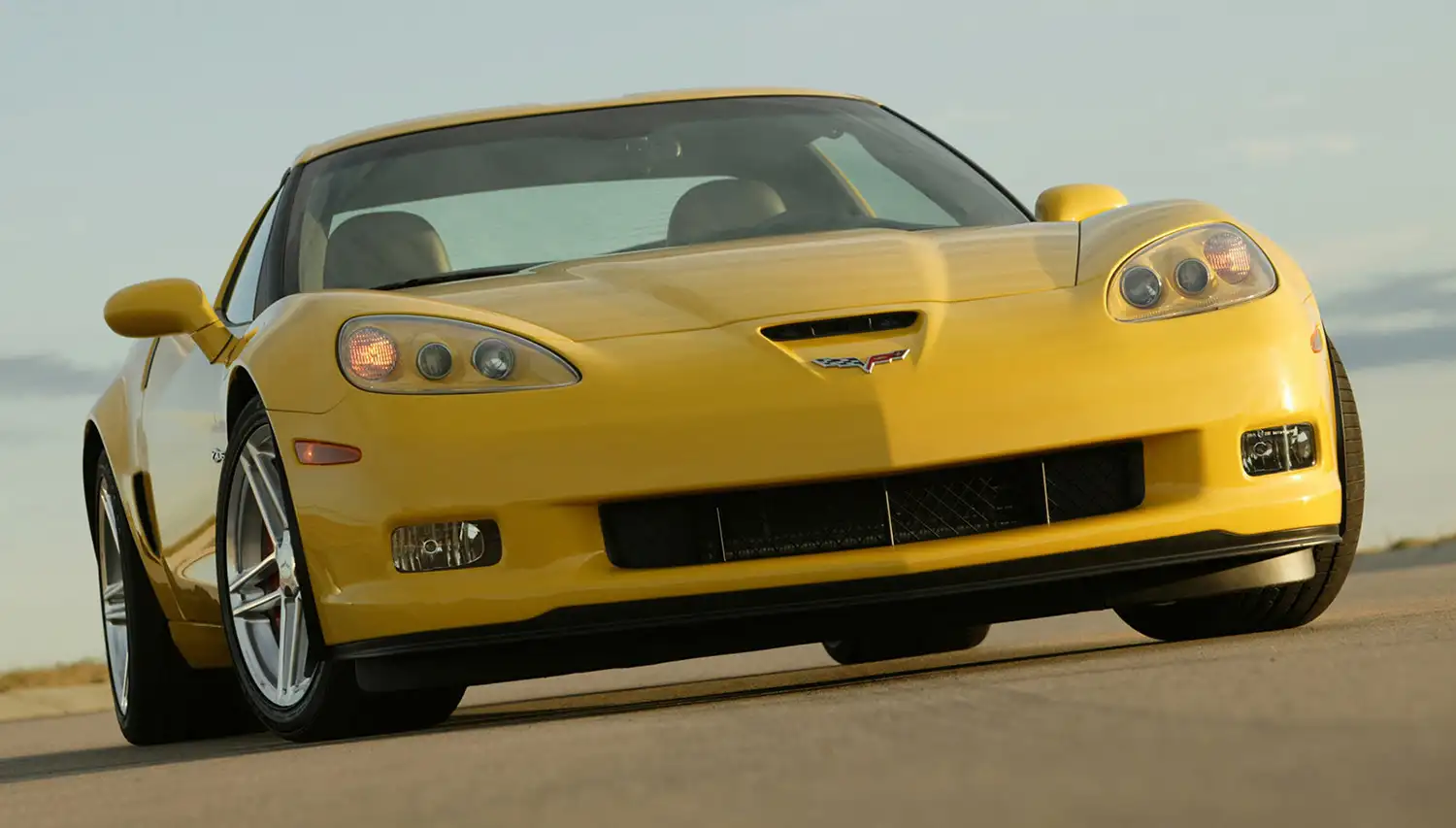
2006-2013 Z06: A foundation for success
The groundbreaking sixth-generation Corvette Z06 elevated Corvette to compete with the world’s most-capable supercars. A power-to-weight ratio of 6.2:1 was one of the best in the world, helping it run from 0 to 60 mph in about 3.7 seconds, through the quarter-mile in the low-11-second range and achieve a top speed of more than 190 mph.
The foundation of the Z06 was its own, dedicated aluminum chassis – the first unique frame for a special model Corvette.
The Z06’s aluminum frame was 136 pounds lighter than the comparable steel frame used in standard models and even incorporated a magnesium engine cradle, contributing to a curb weight of only 3,130 pounds. Mounted on that cradle was another leap in technology: The LS7 small block engine. Displacing 7.0L (427 cubic inches), it was the largest engine offered in the Corvette in more than 30 years – and the most powerful engine in Corvette’s history until the introduction of the Corvette ZR1.
The LS7 used airflow and lightweight technology, including titanium connecting rods and a dry-sump oiling system, derived from the Corvette Racing program to produce 505 horsepower.
Along with its unique frame and LS7 engine, the sixth-generation Corvette Z06 also featured:
- More rigid fixed-roof body style
- Wider front and rear fenders – including carbon fiber front fenders
- Unique rear spoiler and front splitter
- Front and rear brake-cooling ducts – including signature integrated rear-fender inlets
- Specific, lightweight 18-inch front and 19-inch rear wheels, with 275/35ZR18 front tires and 325/30ZR19 rear tires
- Large 14-inch (355 mm) front brake rotors with six-piston calipers and 13.4-inch (340 mm) rear rotors with four-piston calipers
- Unique stabilizer bars, spring rates and shocks.
The ultimate Corvette Z06 with the Z07 Performance Package incorporated a number of components used on the 205-mph Corvette ZR1, including carbon ceramic-matrix brake rotors, Michelin Pilot Sport Cup tires, additional carbon fiber exterior components and Magnetic Selective Ride Control. In 2012, a Z07-equipped Corvette lapped the Nürburgring in 7:22.68.
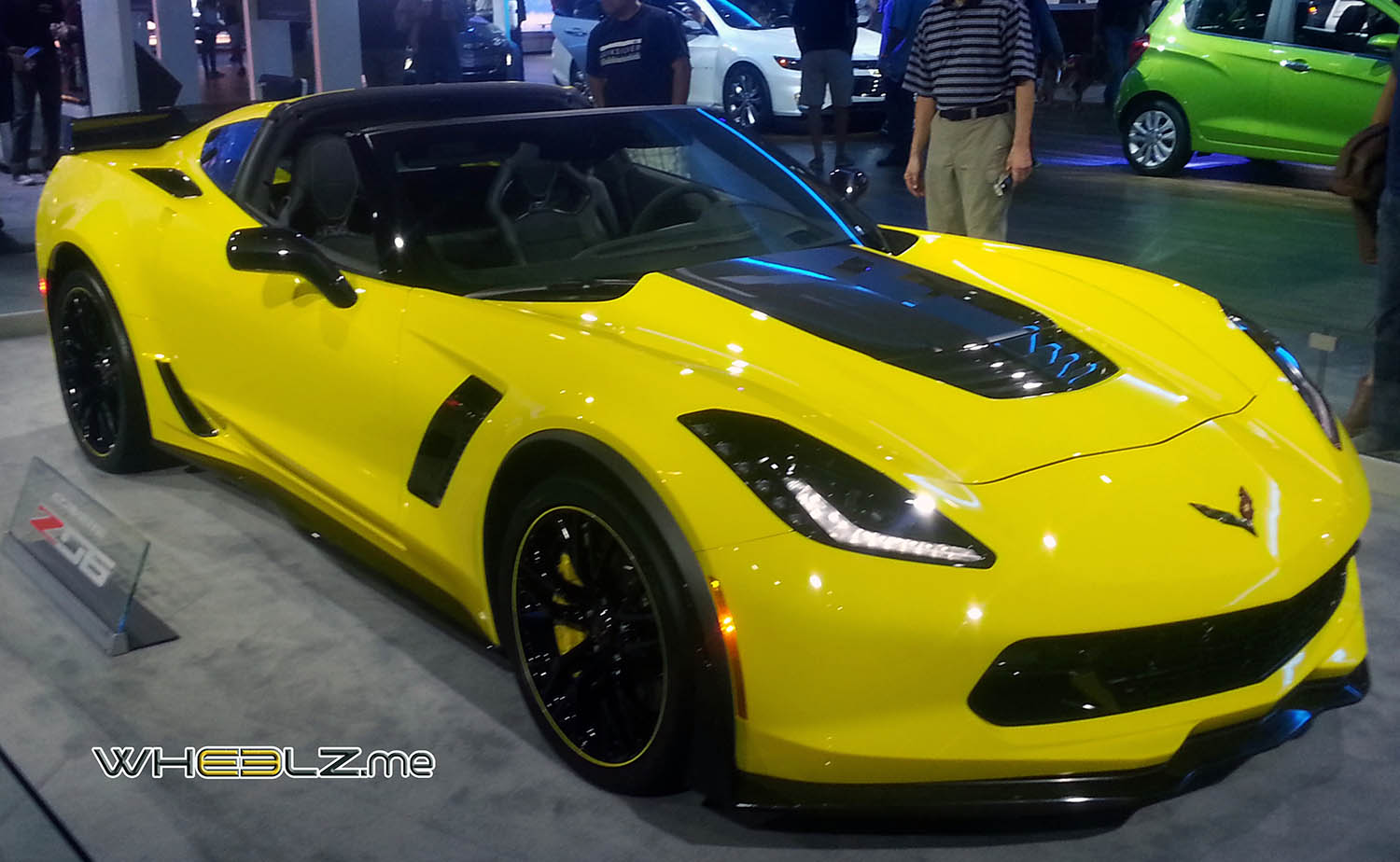
2015 Z06: The most capable ever
The new 2015 Corvette Z06 is the first Z06 to offer a supercharged engine, an automatic transmission and, thanks to a stiffer aluminum frame, a removable roof panel. It is also the most track-capable Corvette, ever.
It was developed in conjunction with the Corvette C7.R race car with technology proven through Corvette Racing, the most successful program in the Tudor United Sports Car Challenge series, formerly the American Le Mans Series.
A new, supercharged 6.2L engine, rated at an estimated 625 horsepower (466 kW), powers the Z06. It is also one of the industry’s only supercars to offer the choice of two transmissions – a seven-speed manual and an all-new eight-speed automatic transmission. Developed by General Motors, the paddle-shift eight-speed offers full manual control, delivering quick, seamless shifts that rival the world’s best dual-clutch/semi-automatic transmissions.
An available, carbon fiber aero package adds a carbon fiber front splitter with aviation-style winglets, carbon fiber rocker panels and a larger rear spoiler with a fixed wickerbill – a small, vertical tab at the edge of the spoiler that significantly increases downforce.
The available Z07 package adds larger winglets, an adjustable, see-through center section on the rear spoiler, Michelin Pilot Super Sport Cup tires and carbon ceramic-matrix brakes. With this package, the Corvette Z06 will deliver the most aerodynamic downforce of any GM production car.
